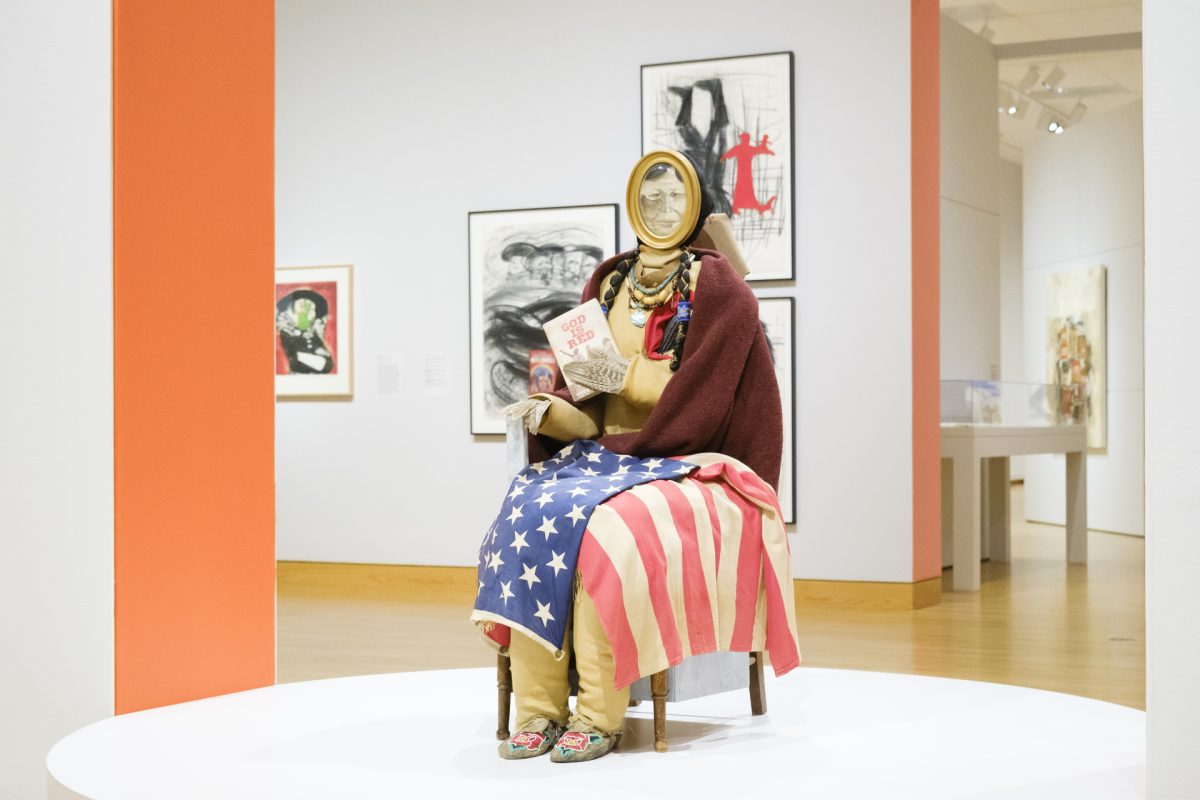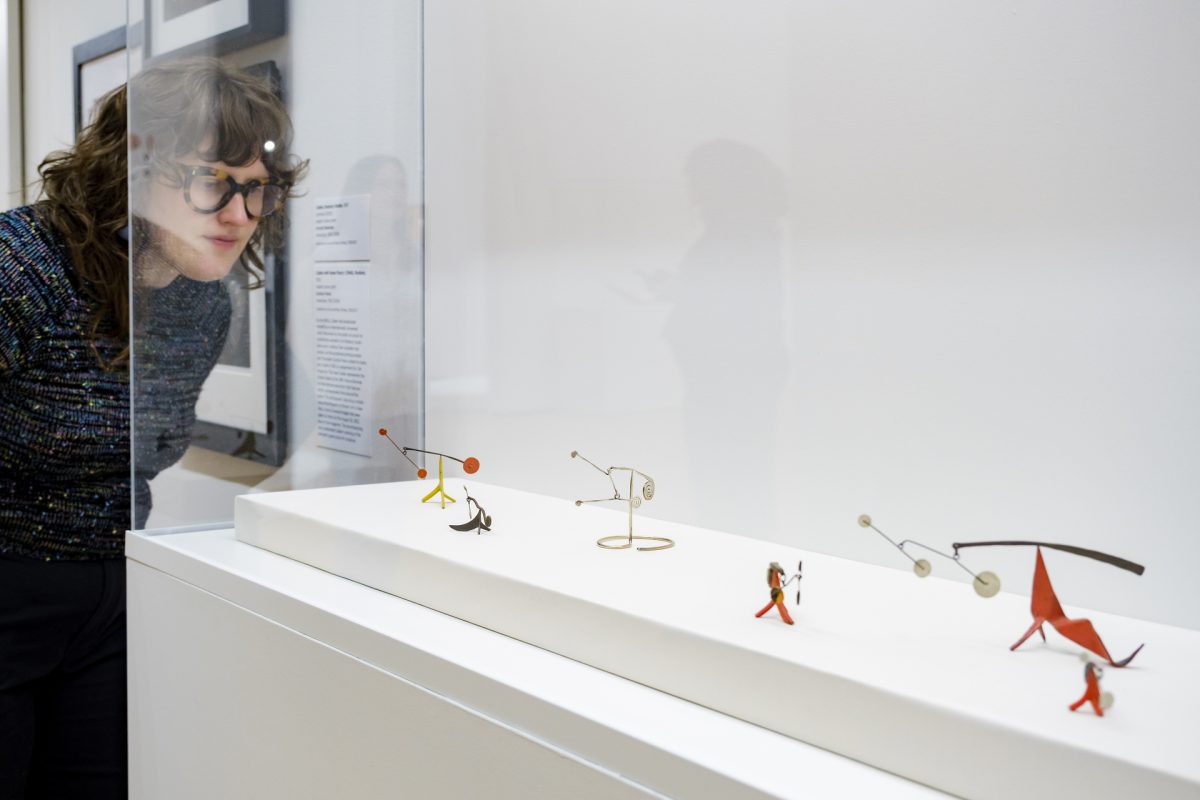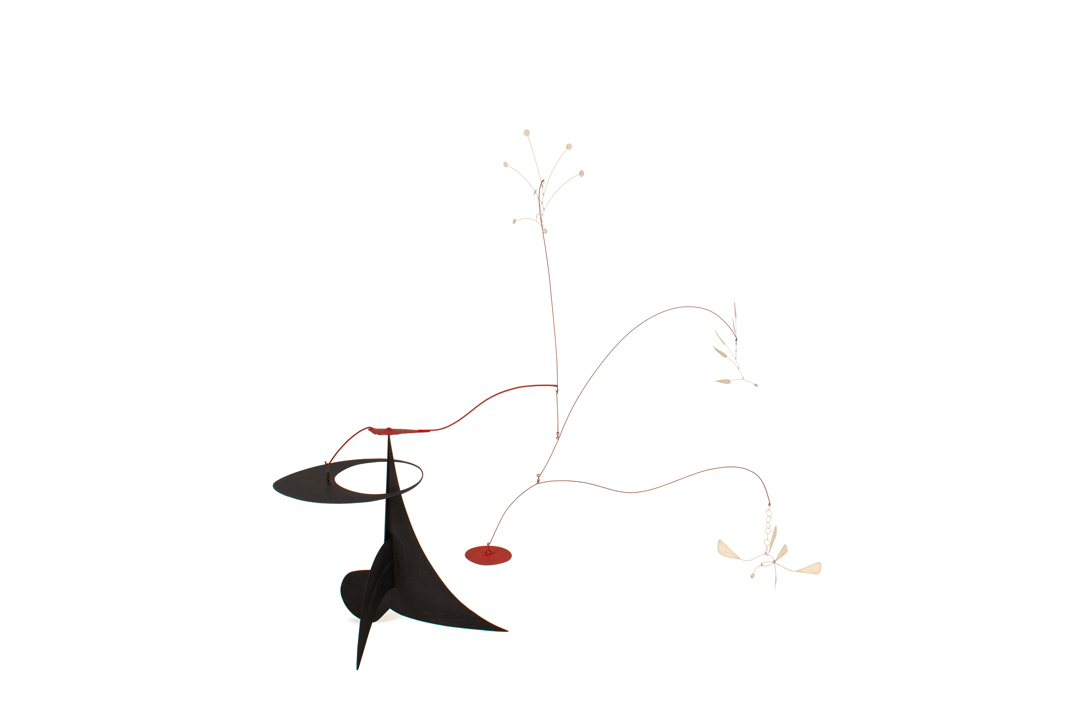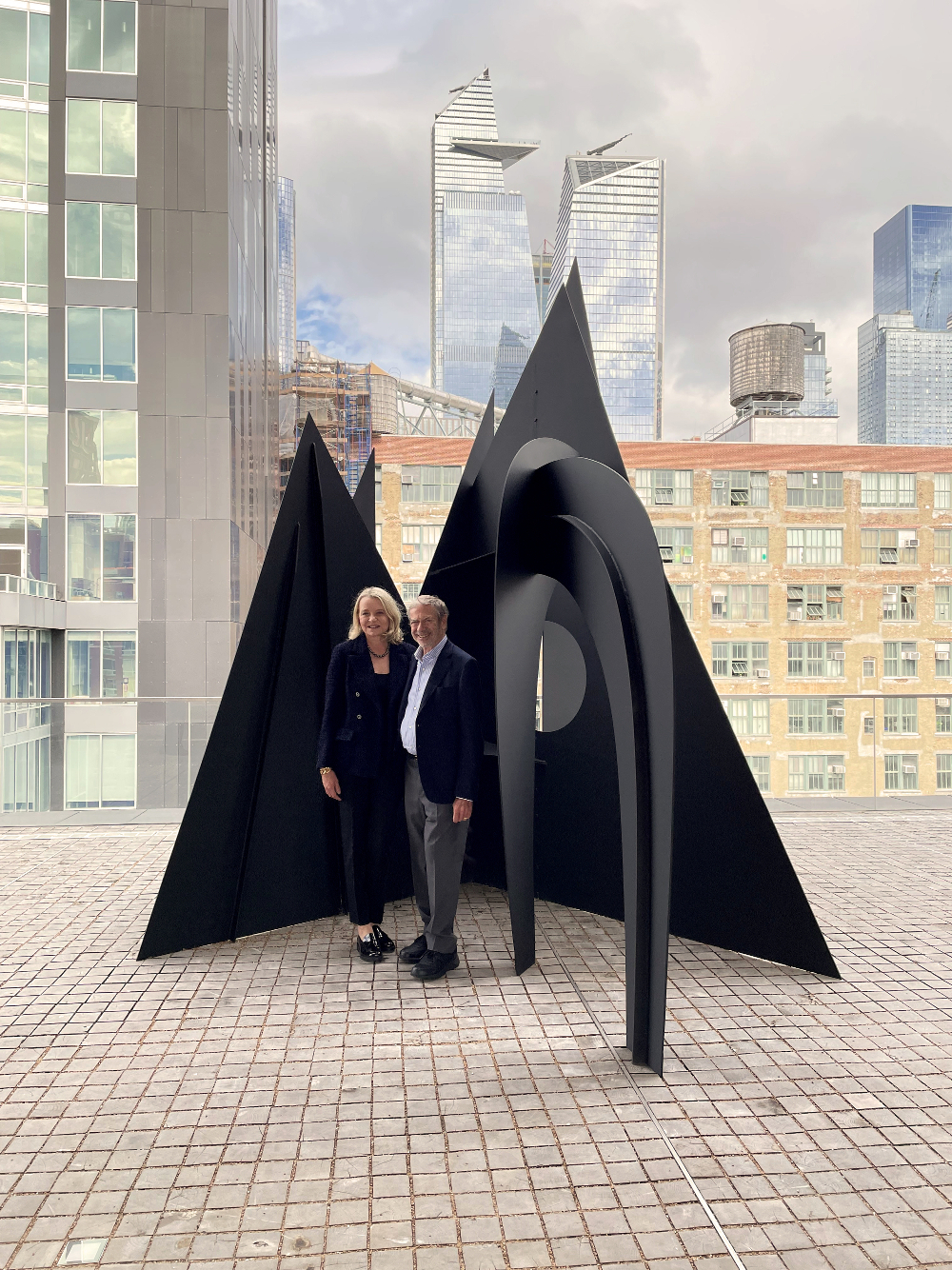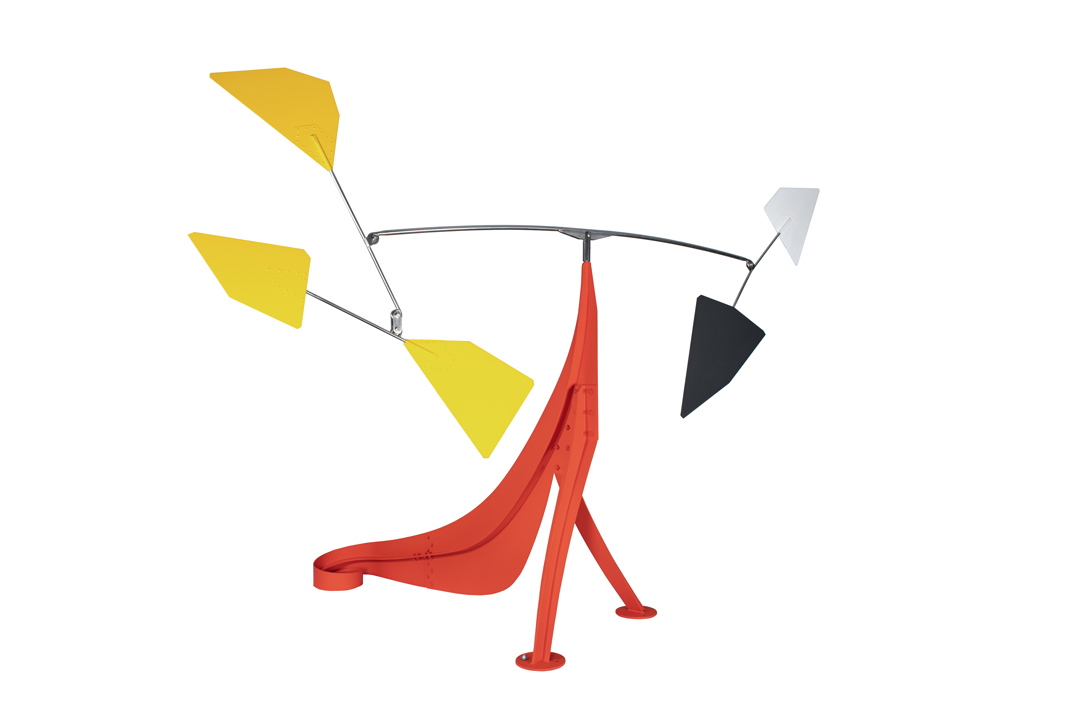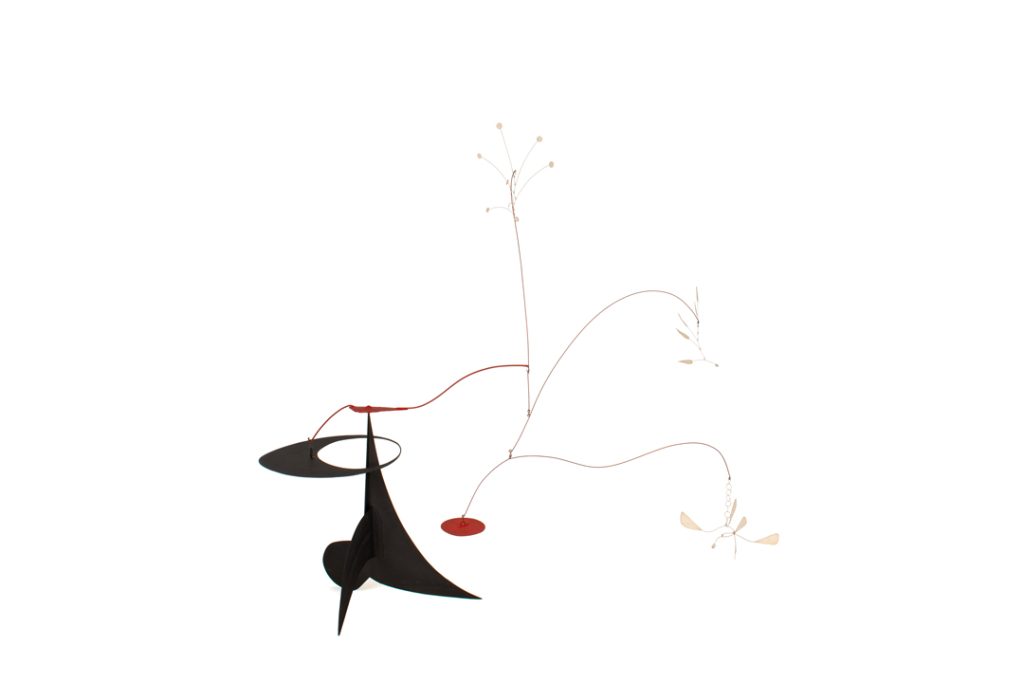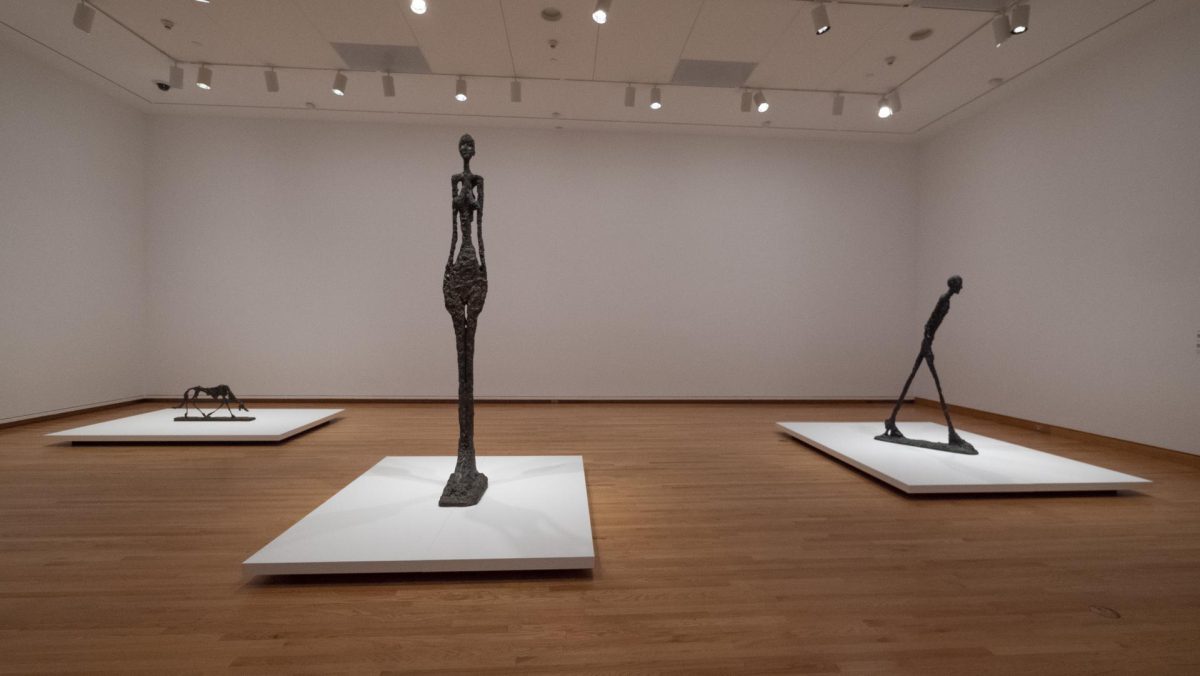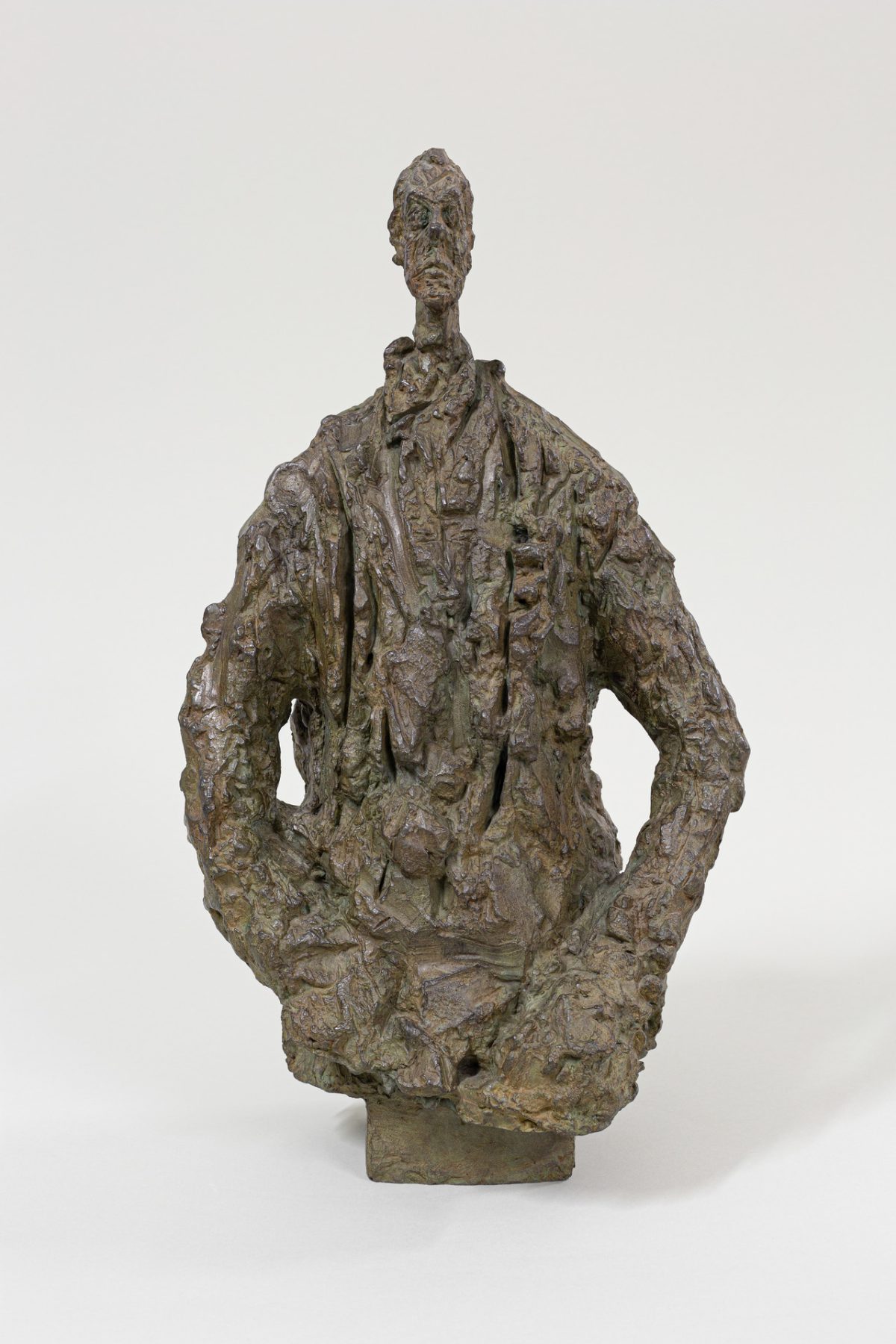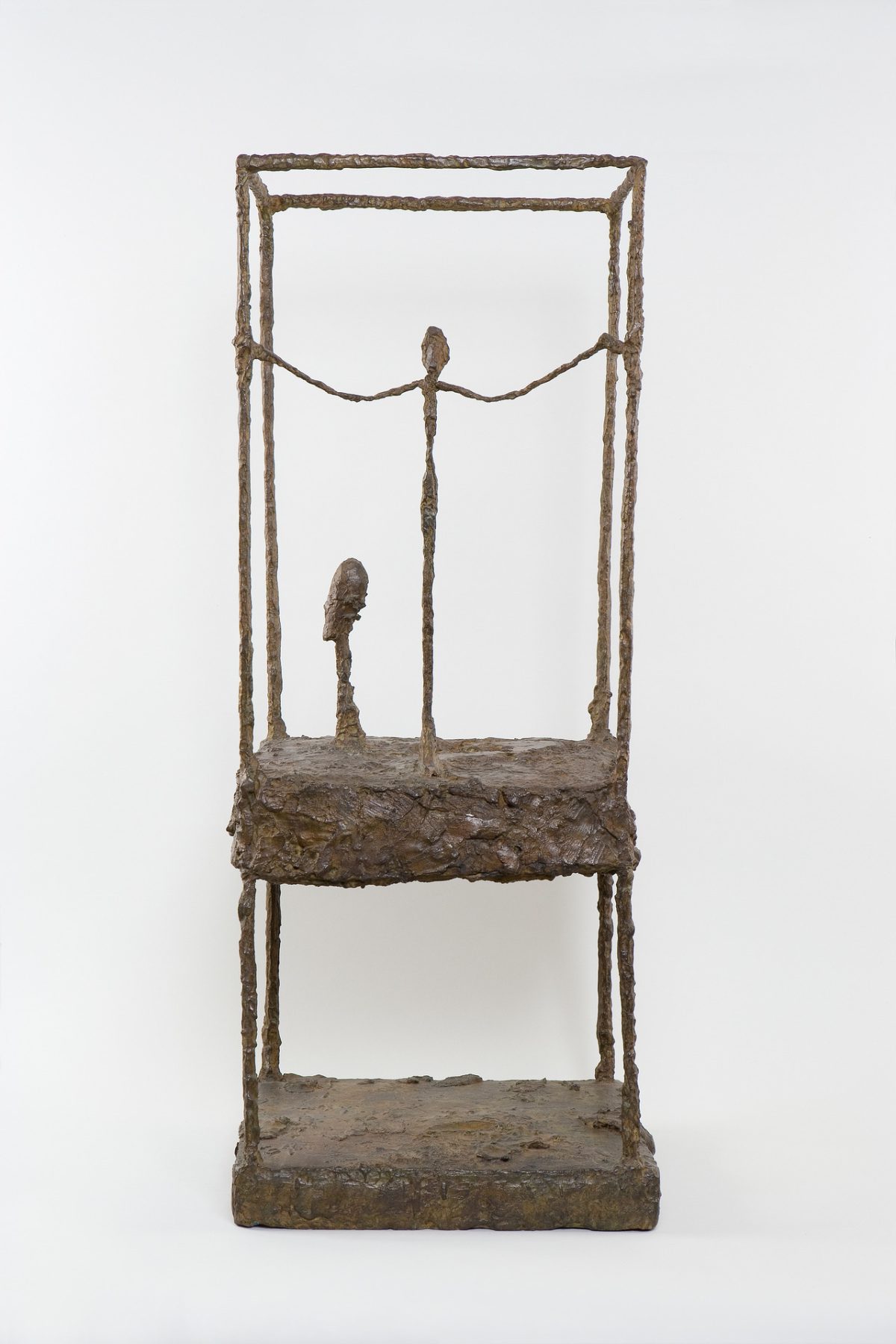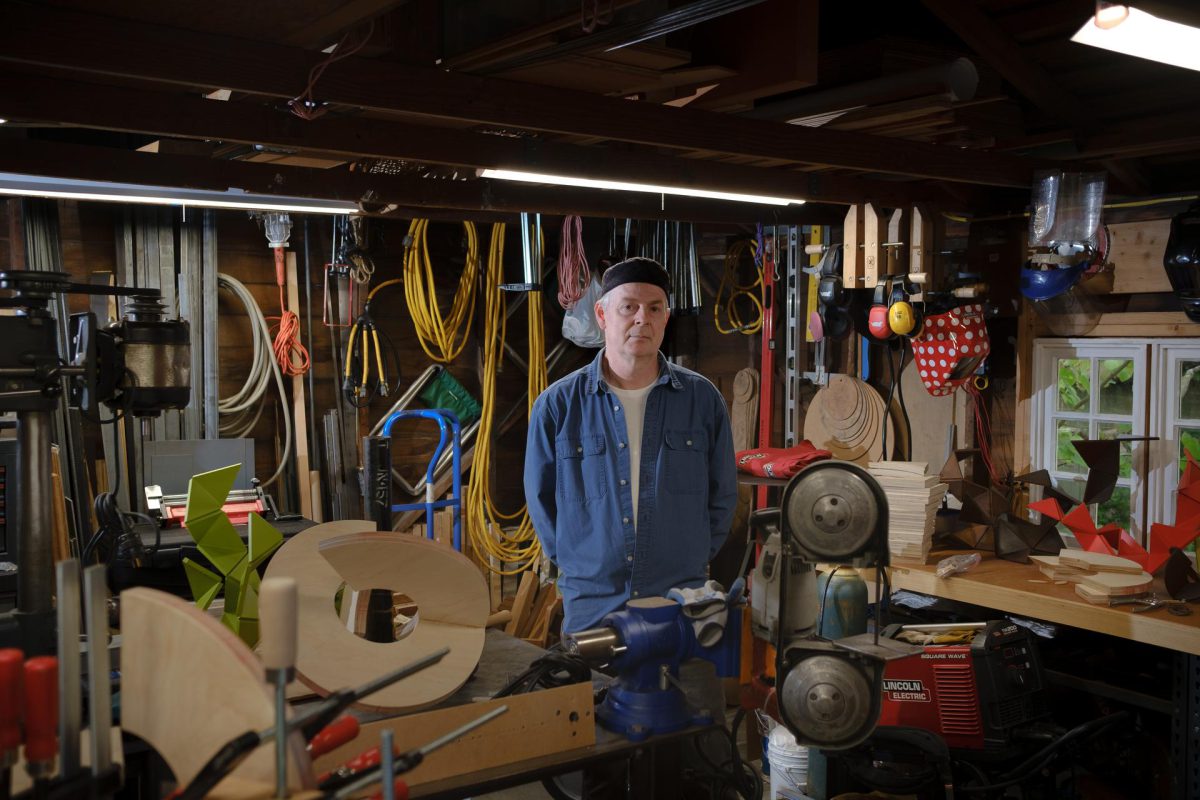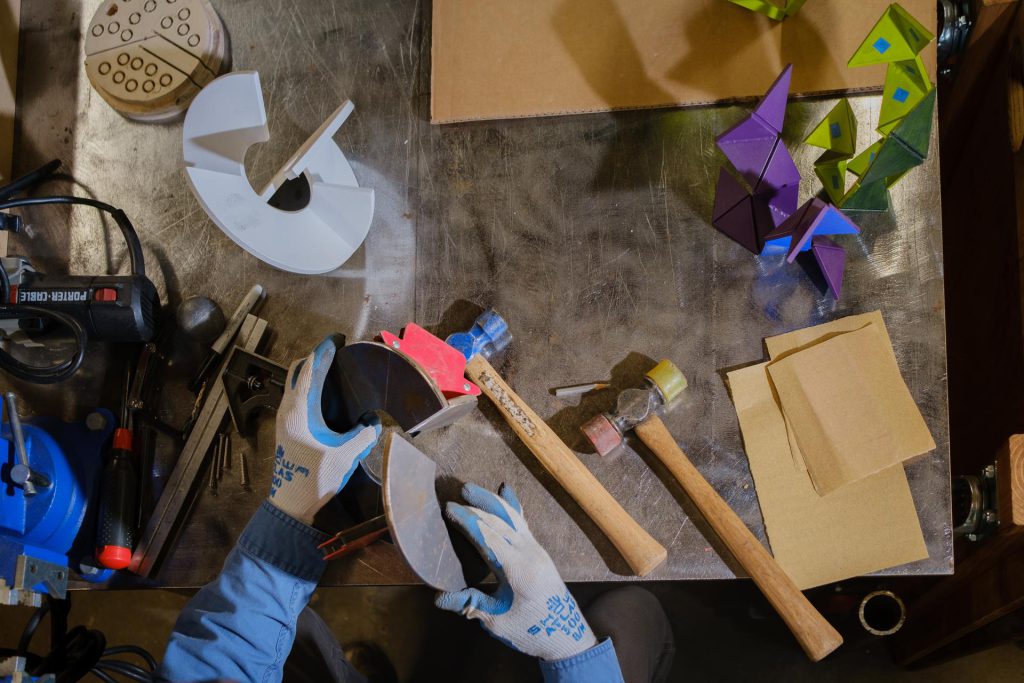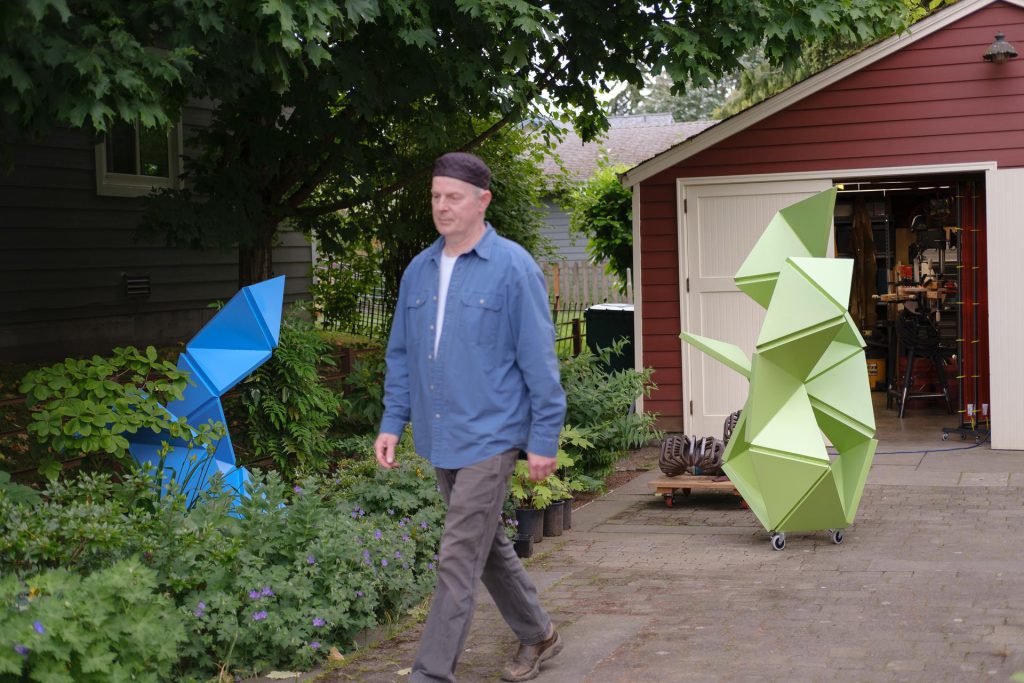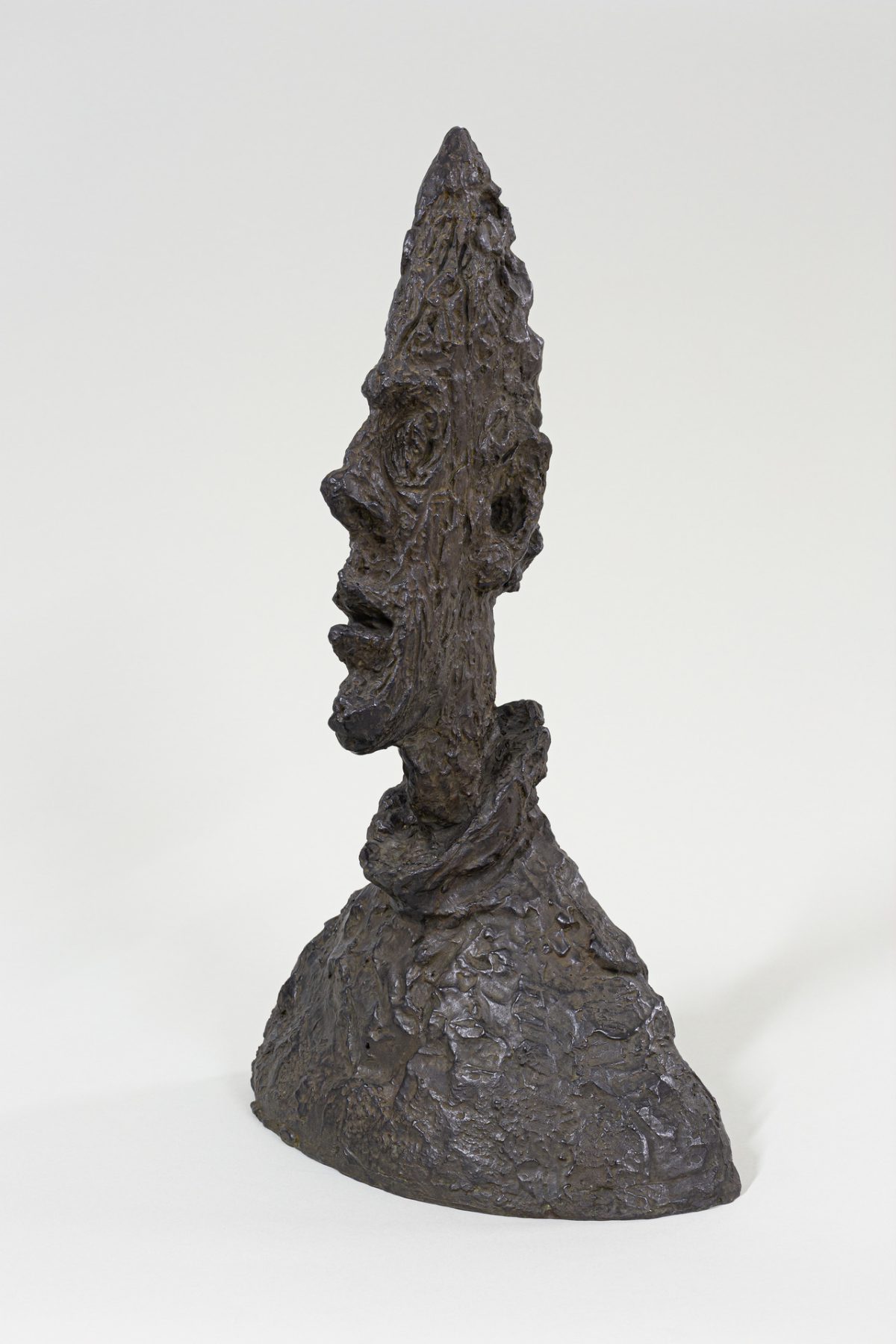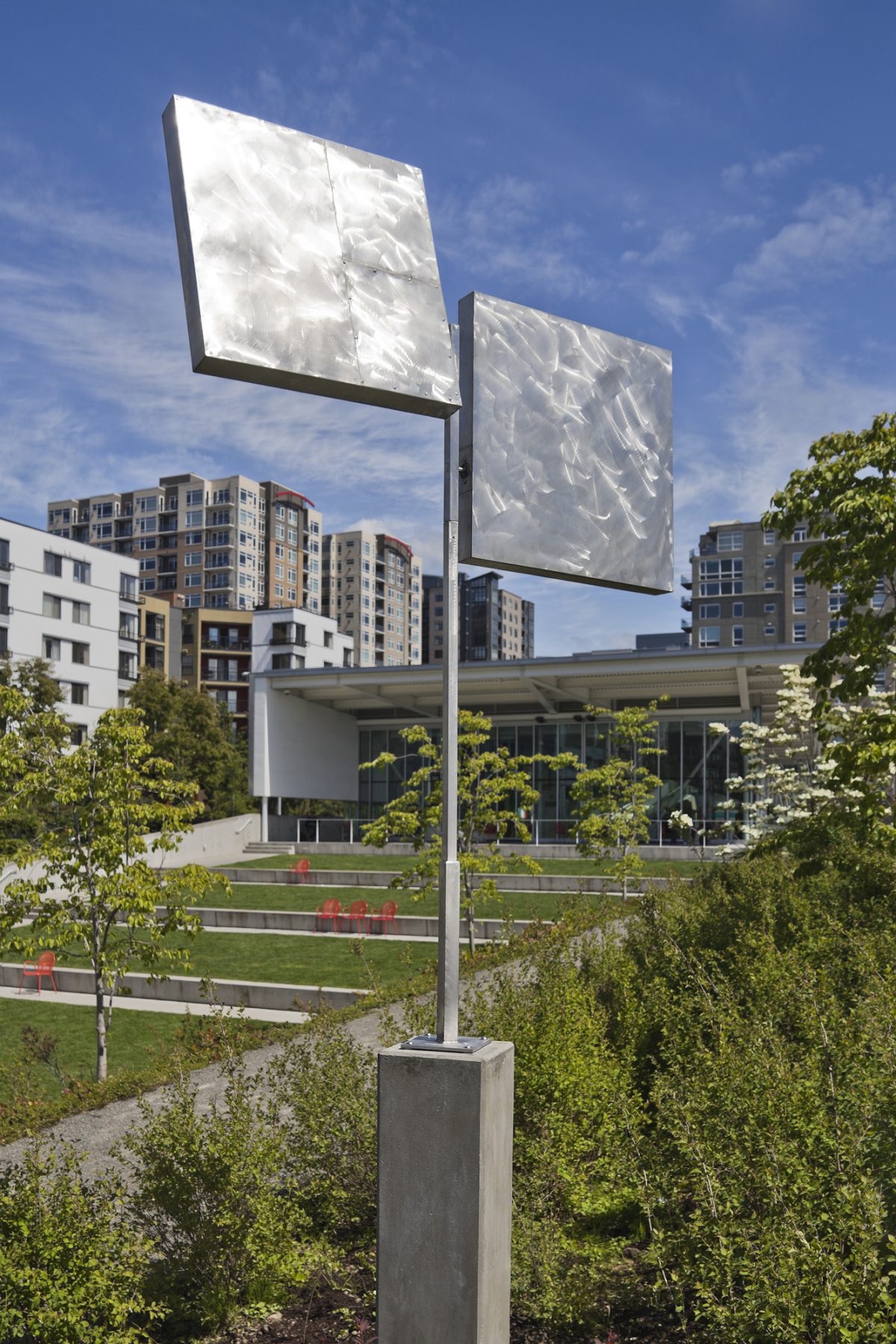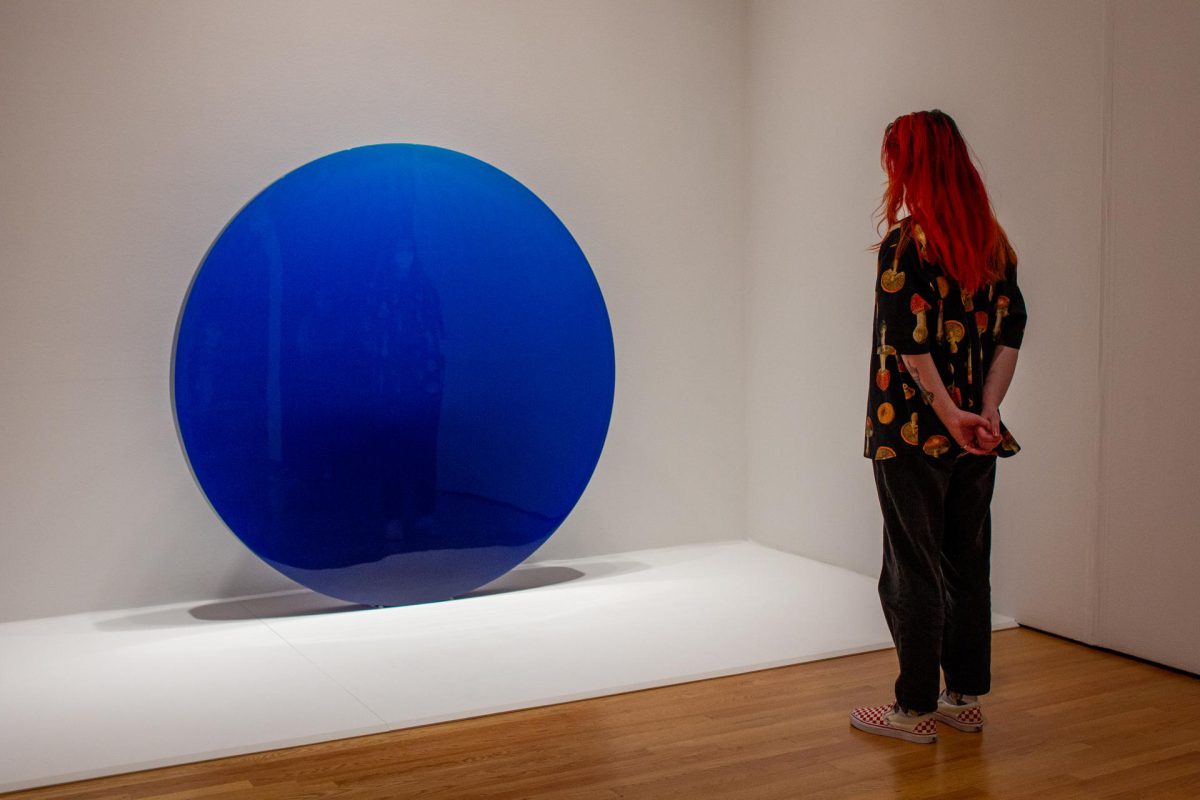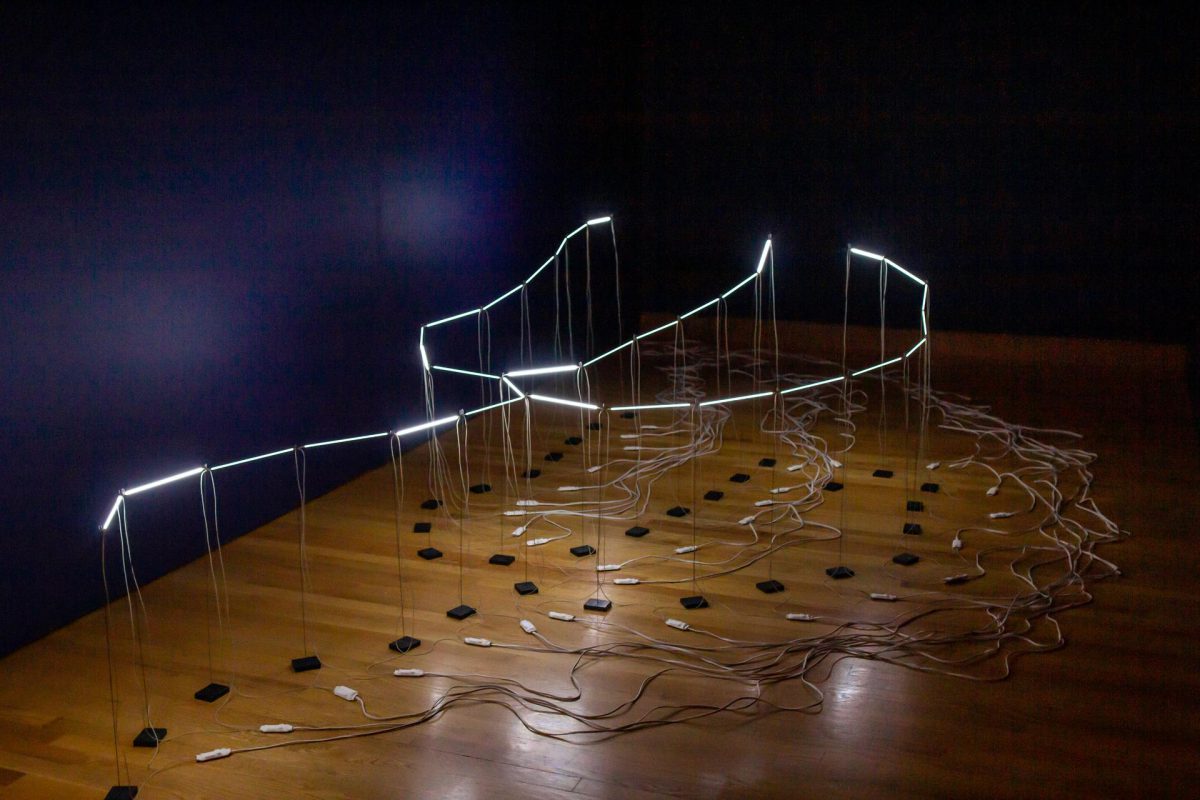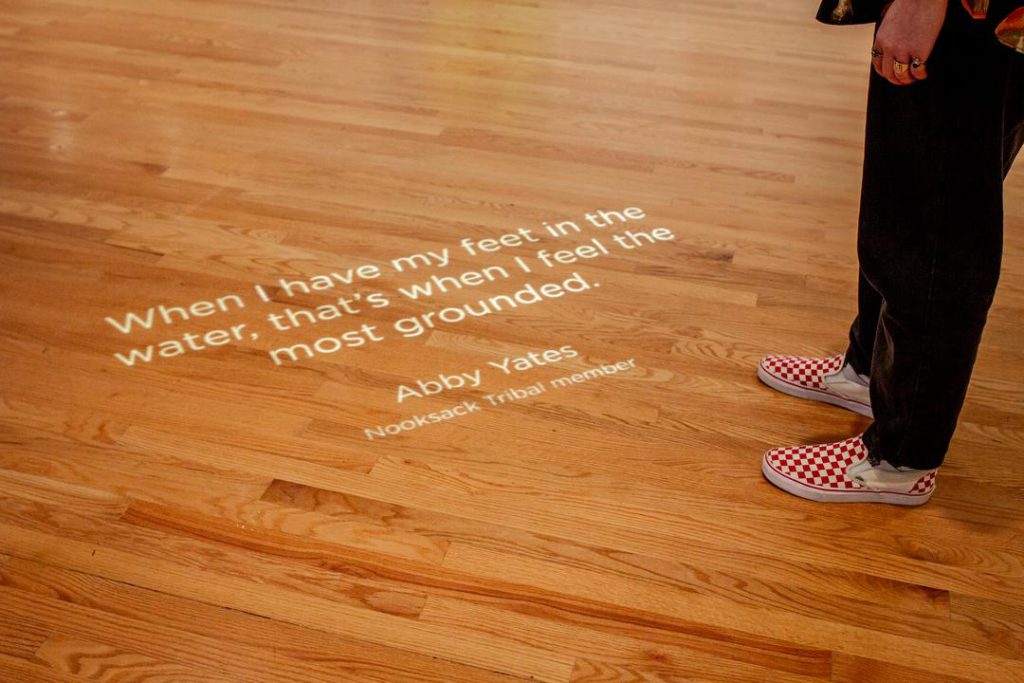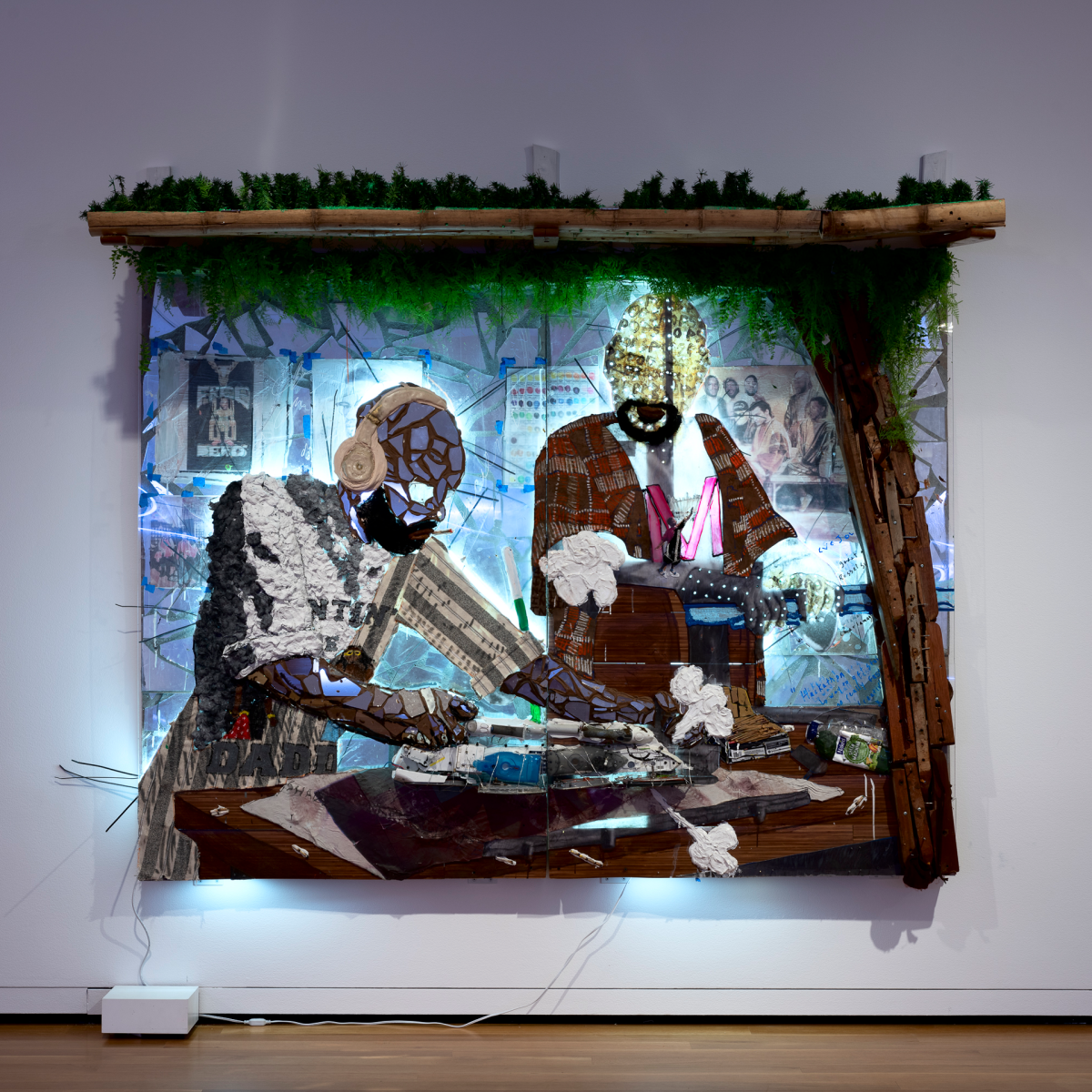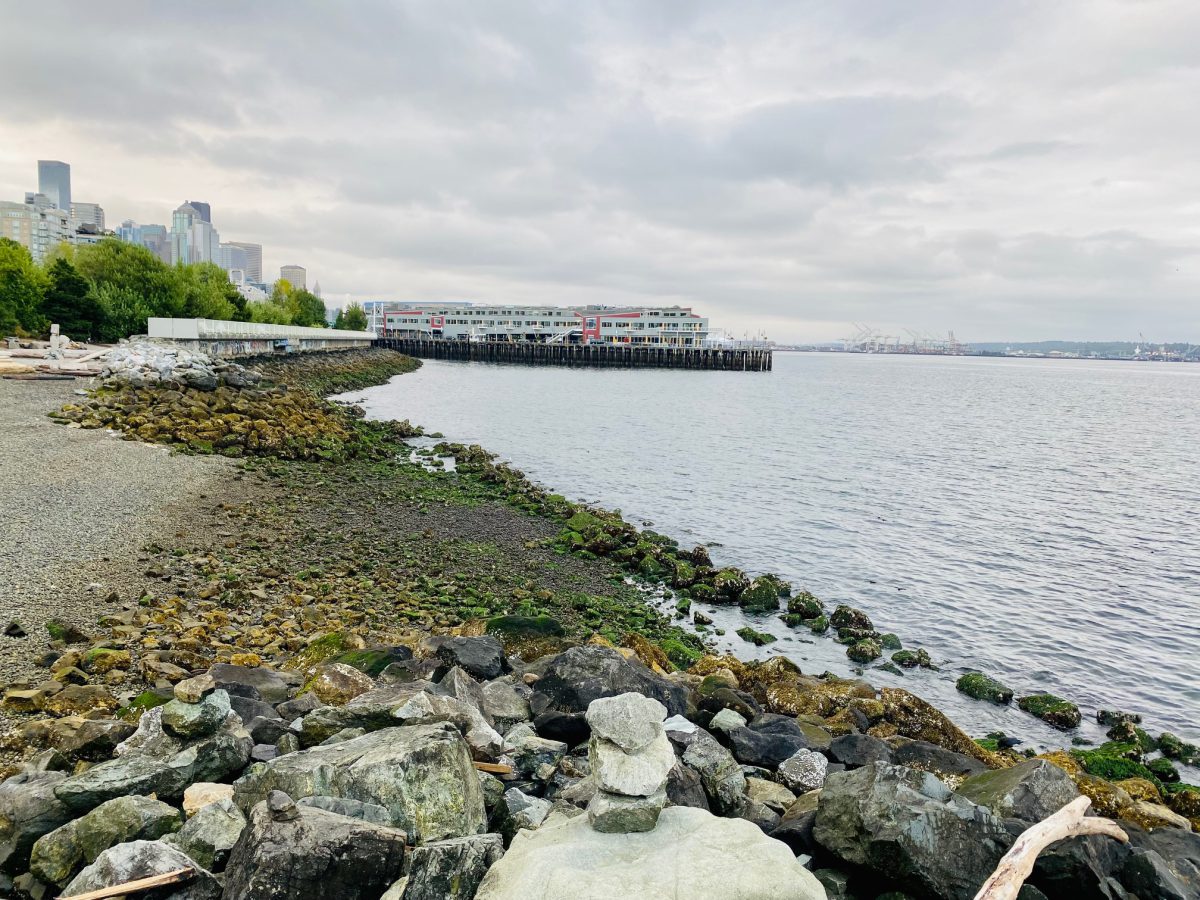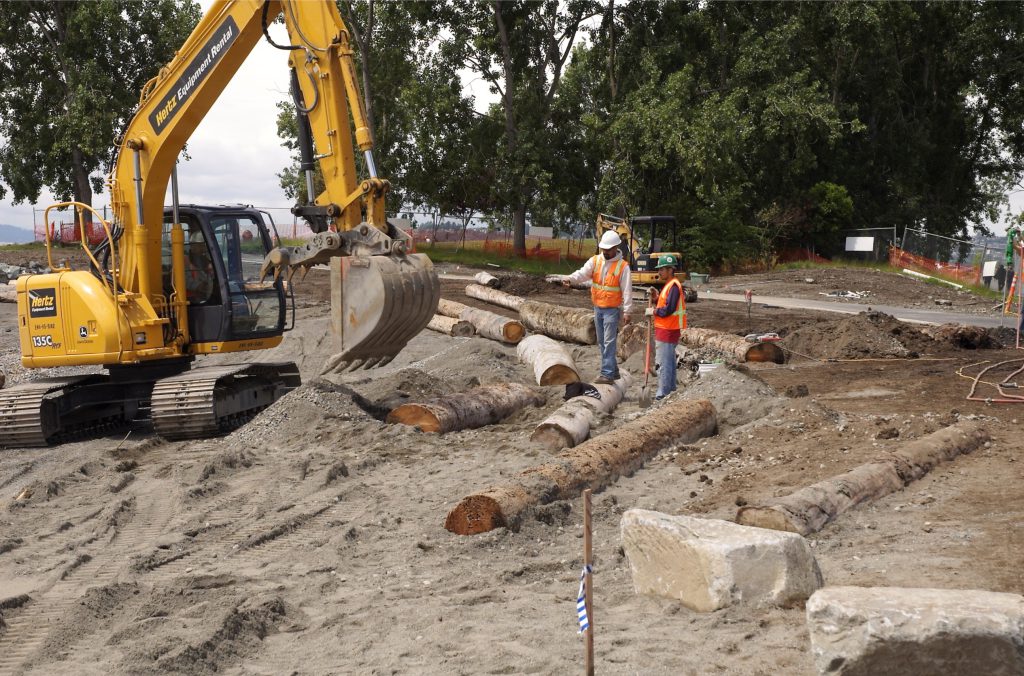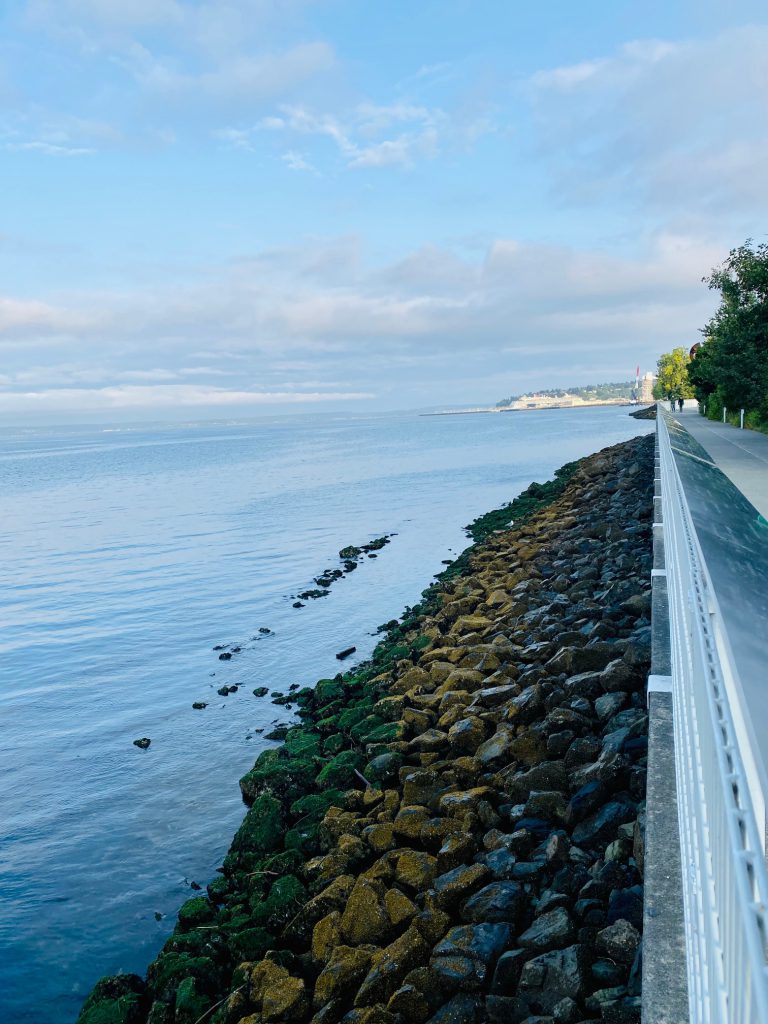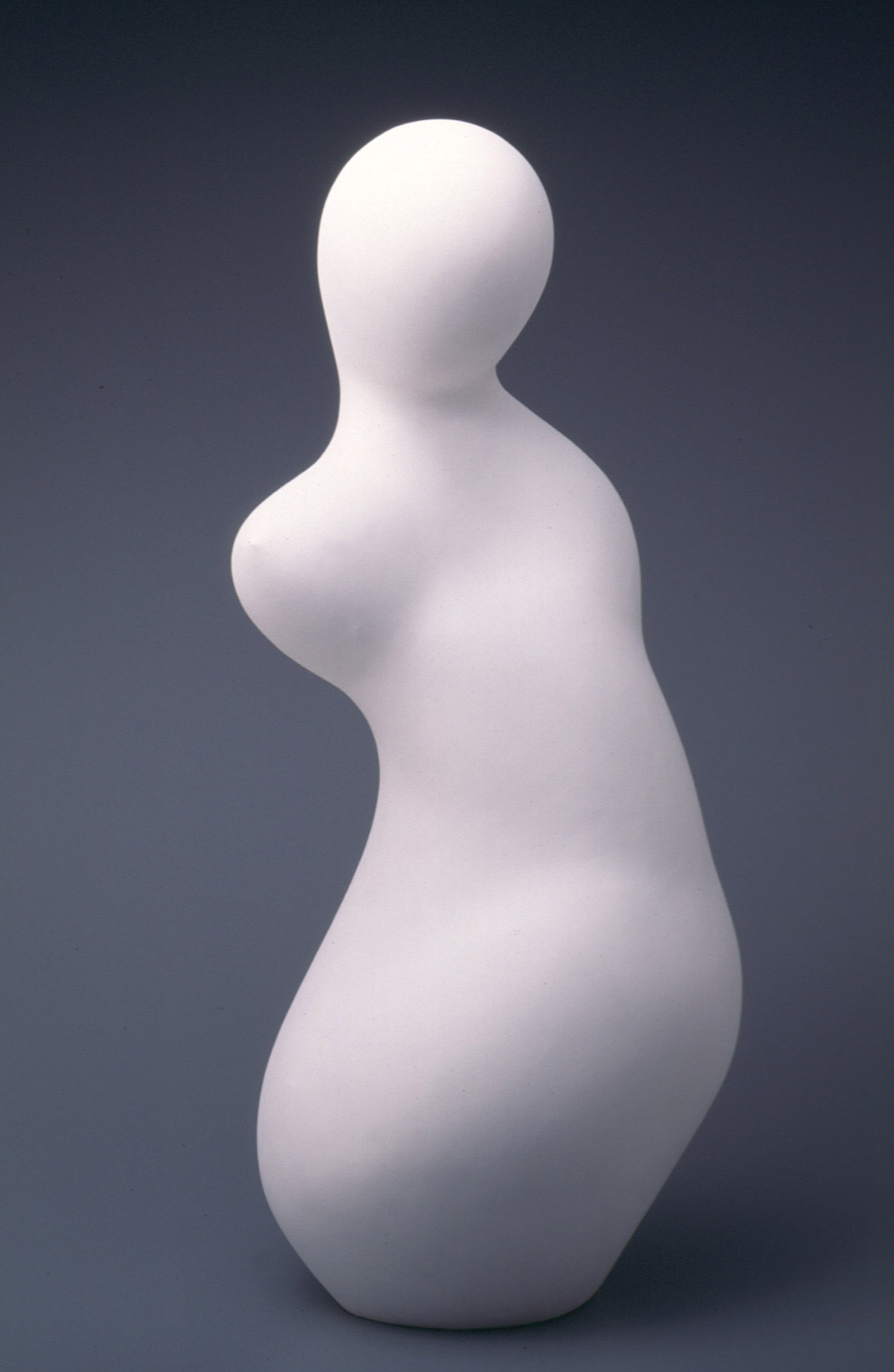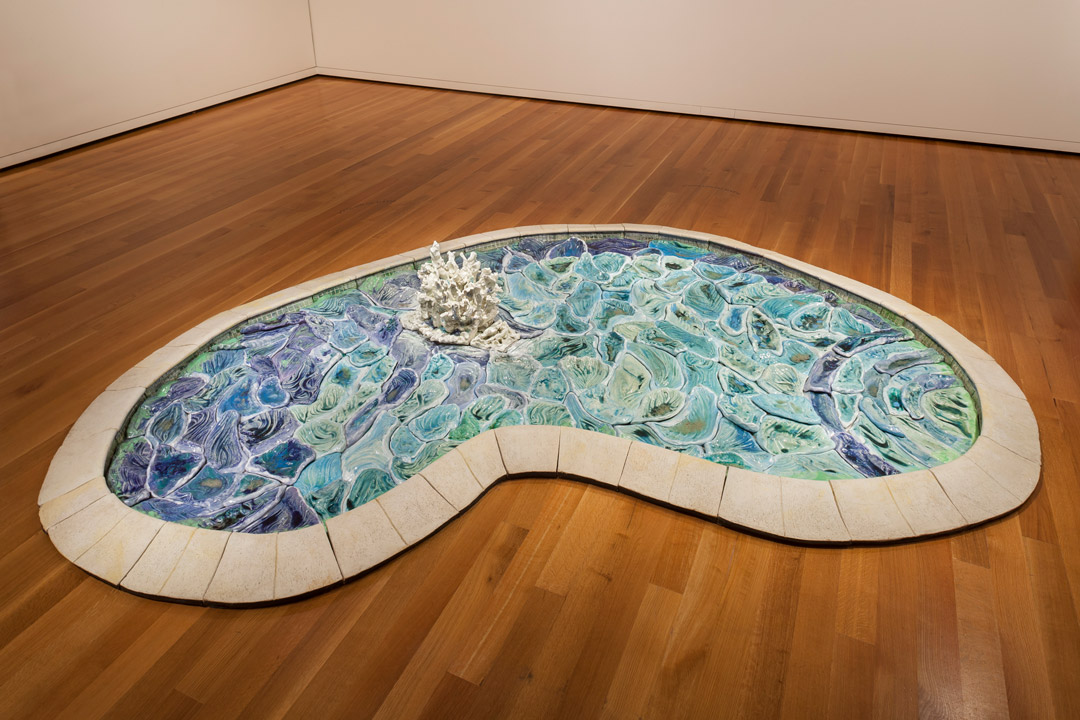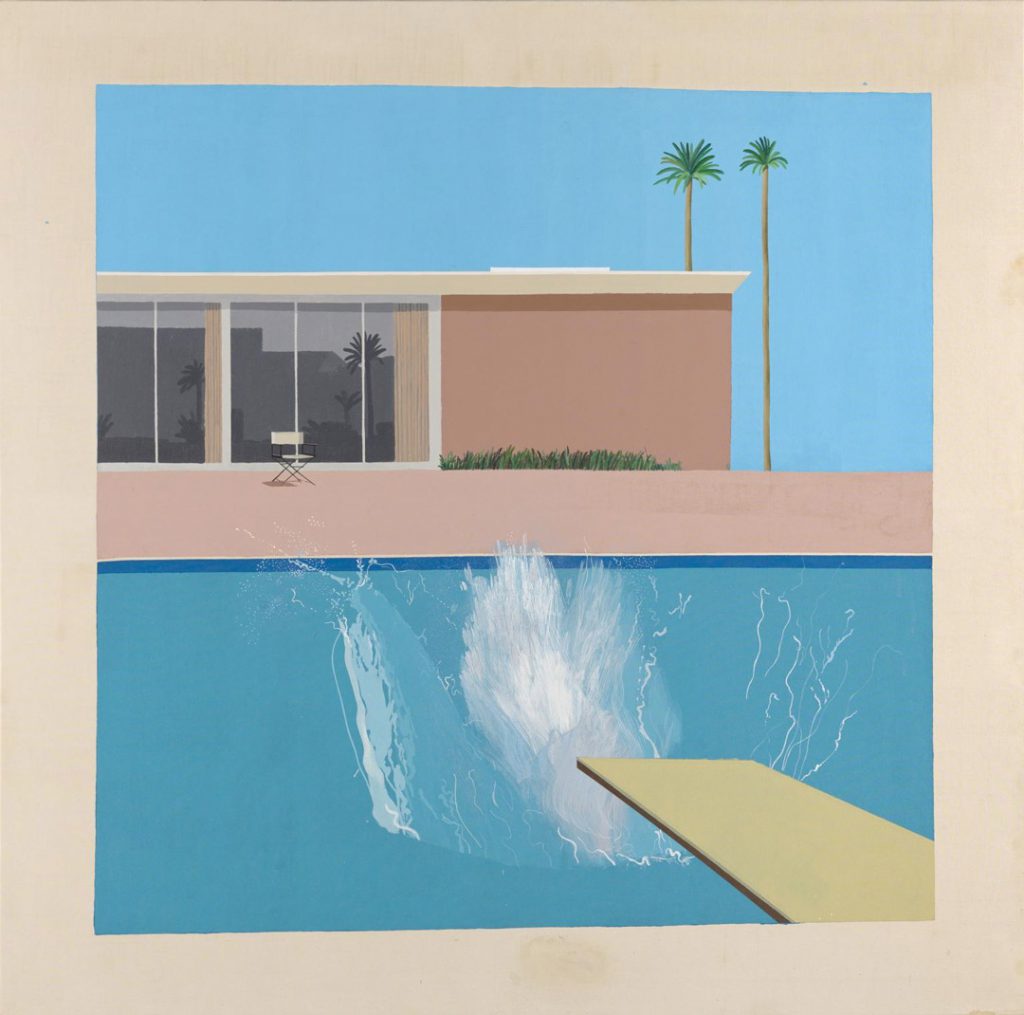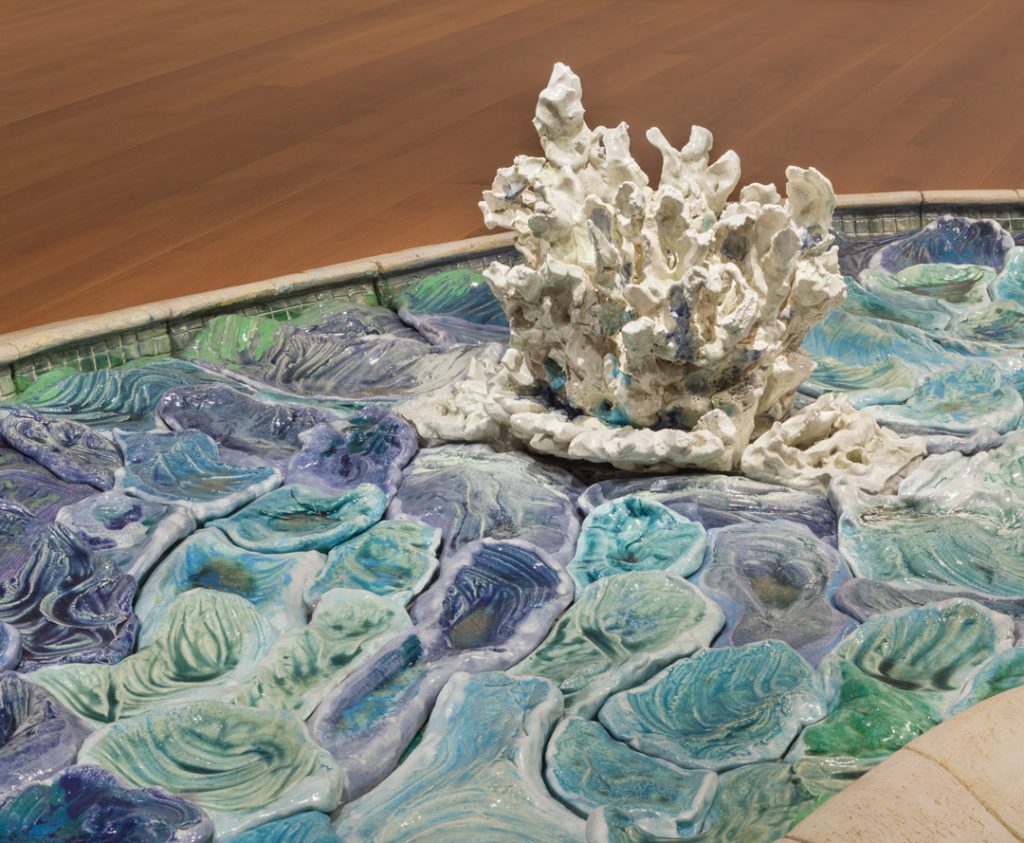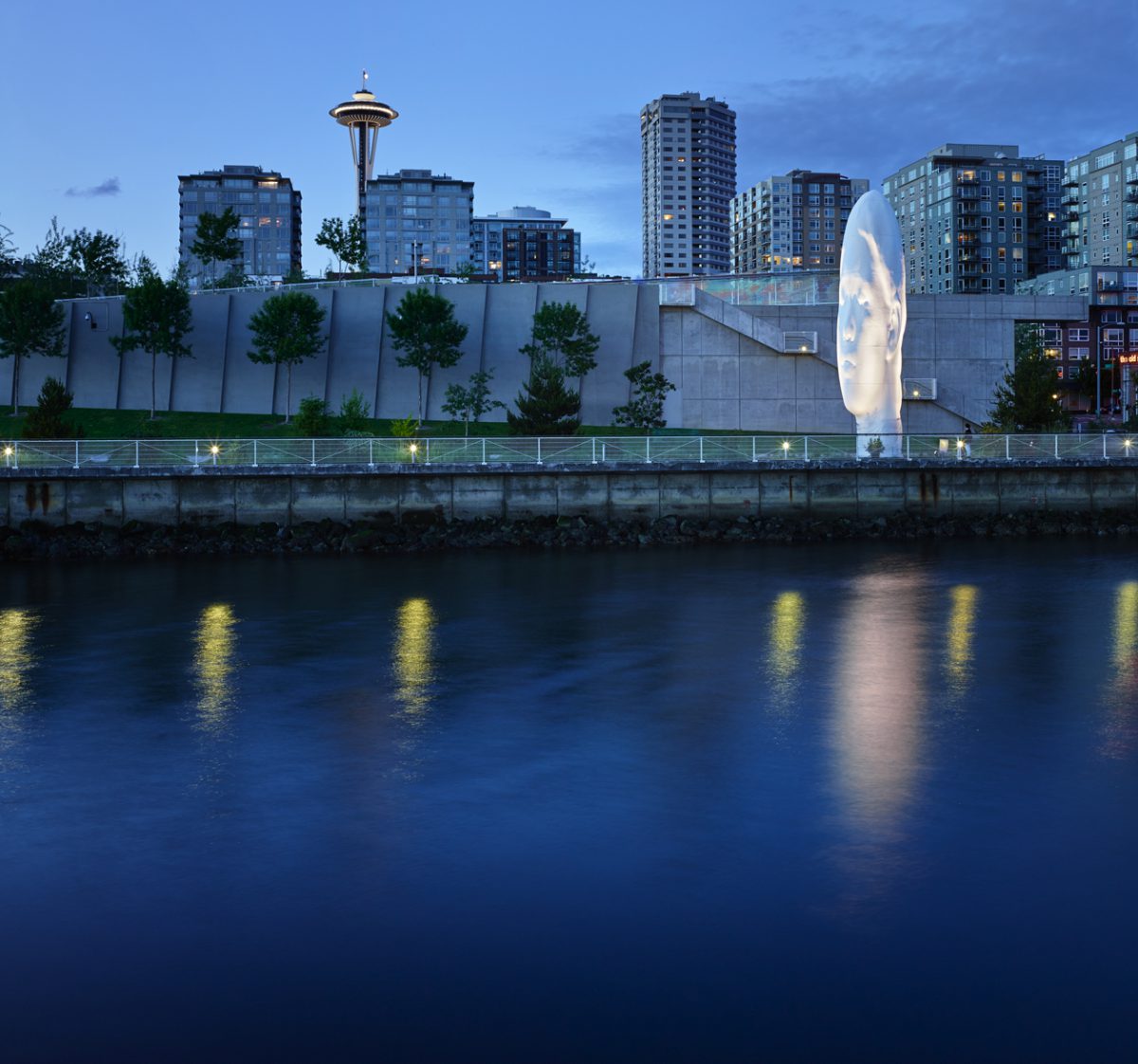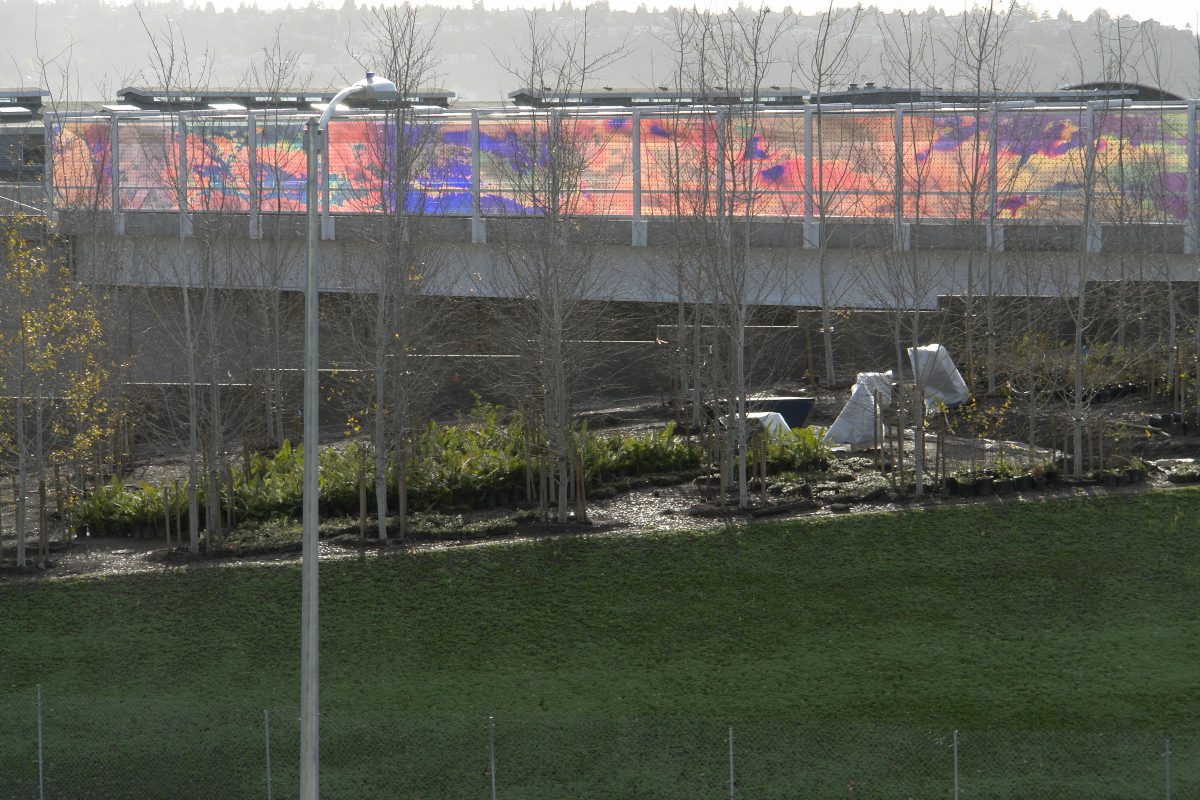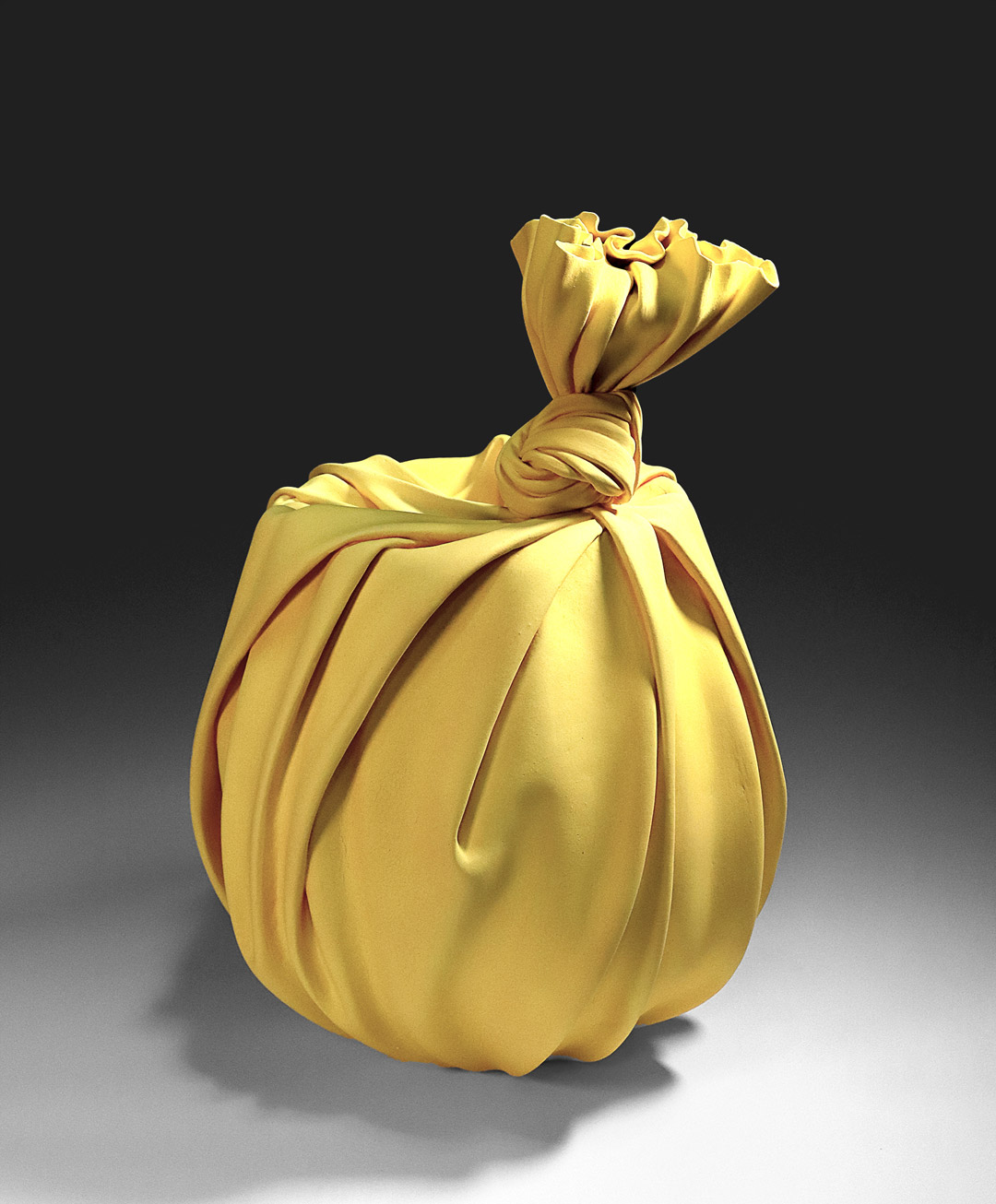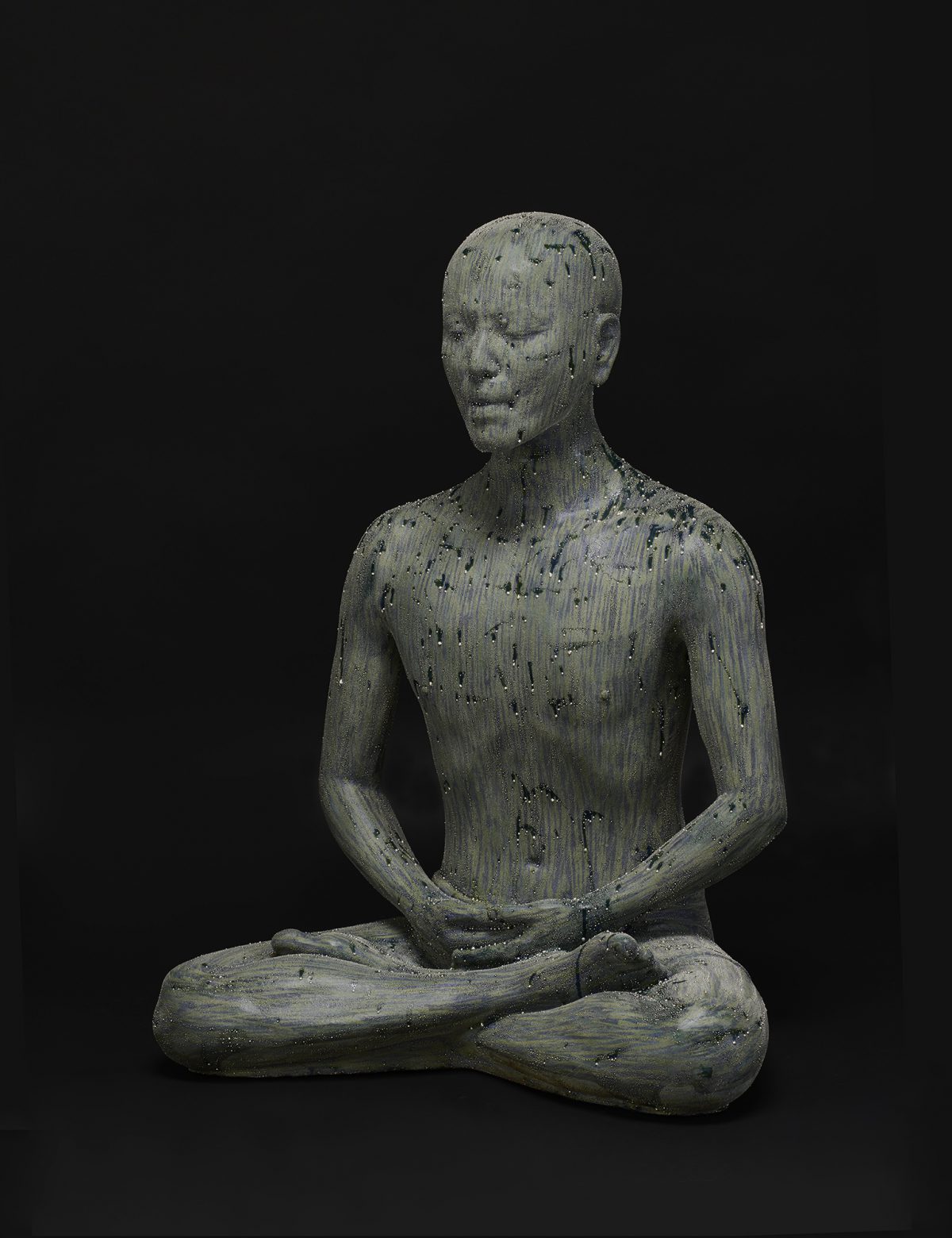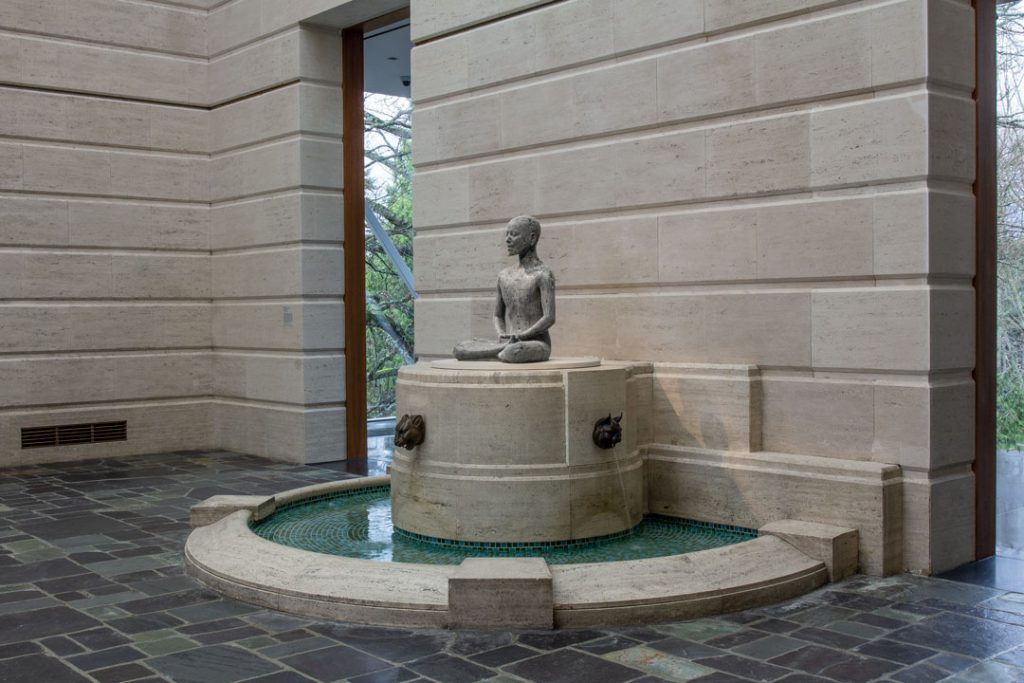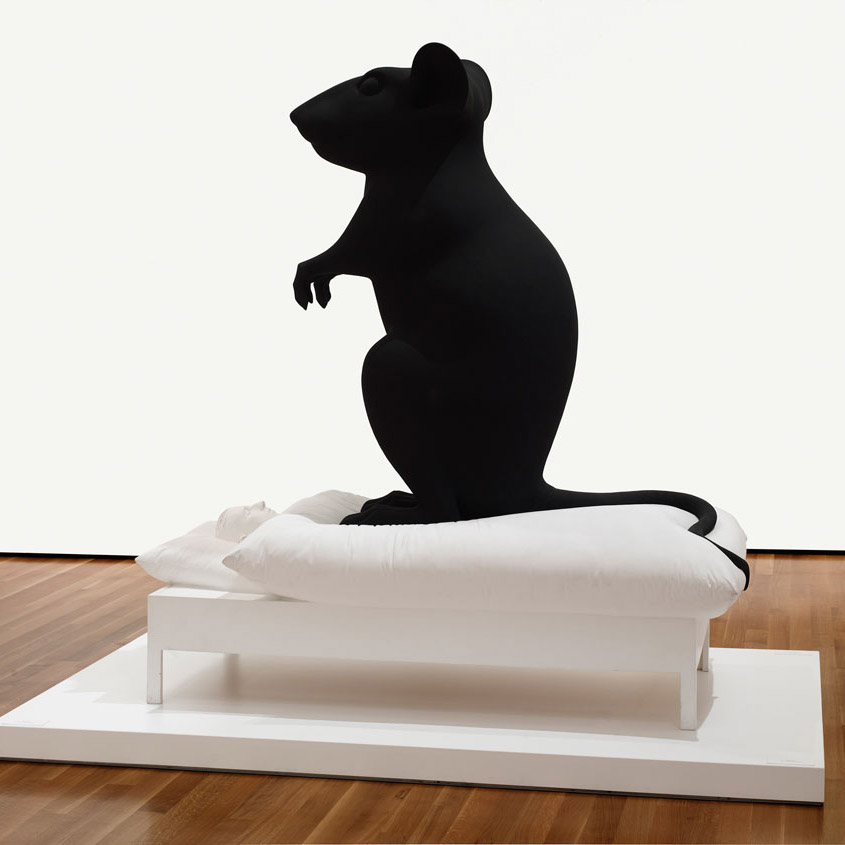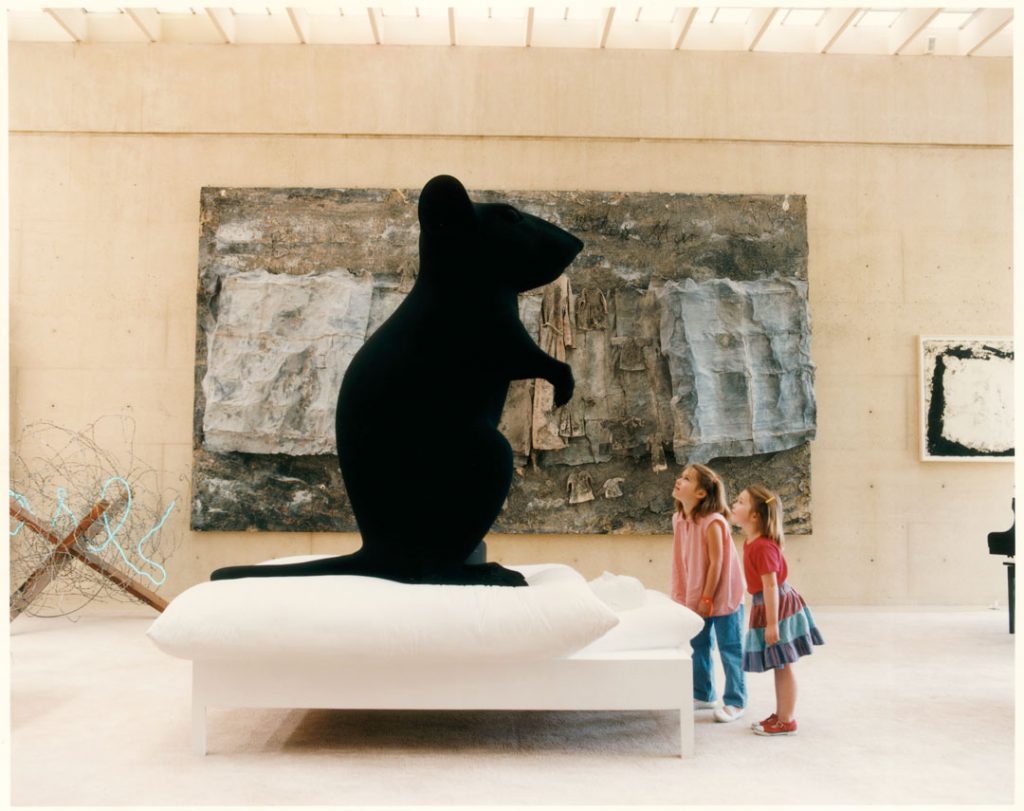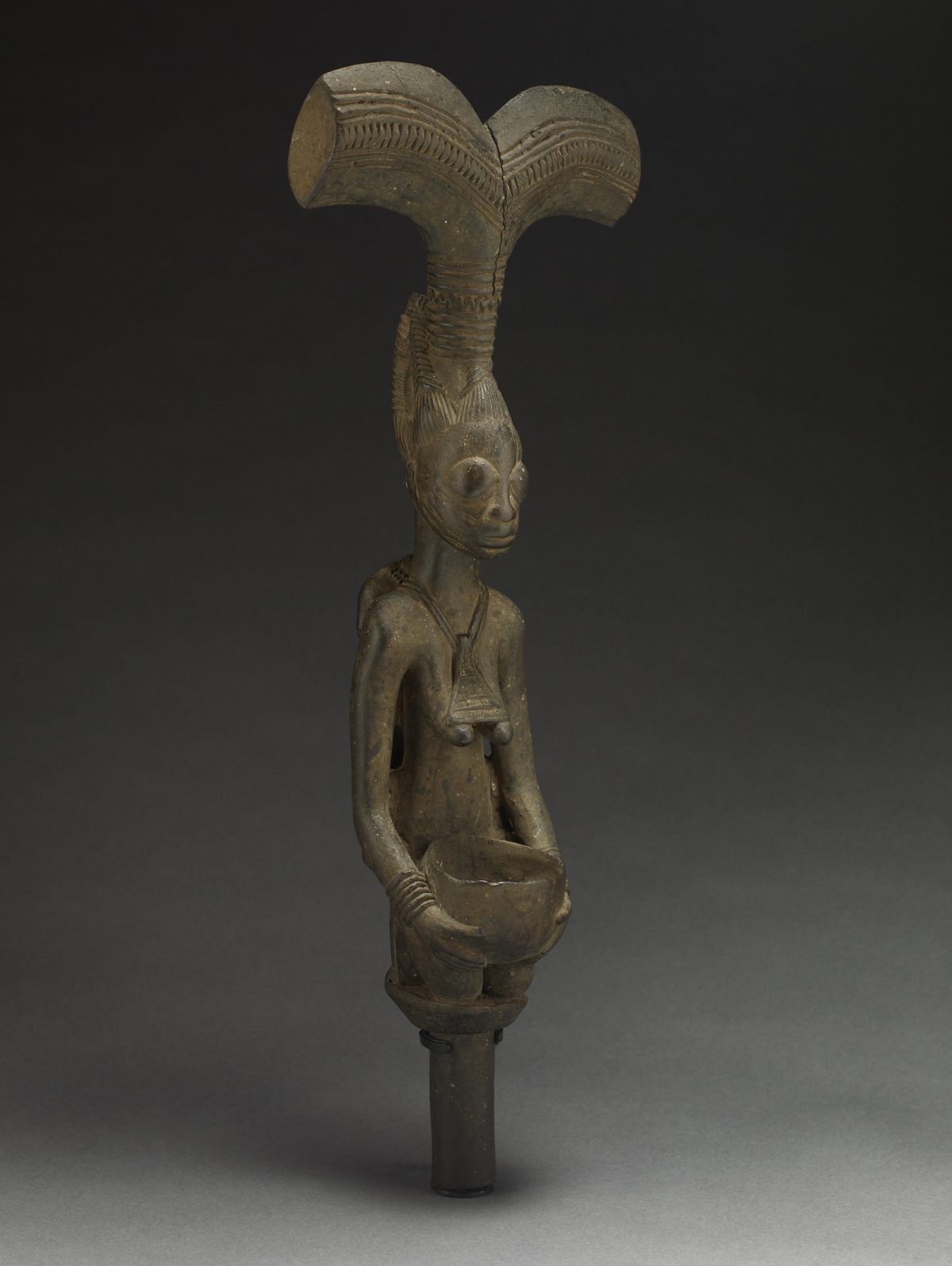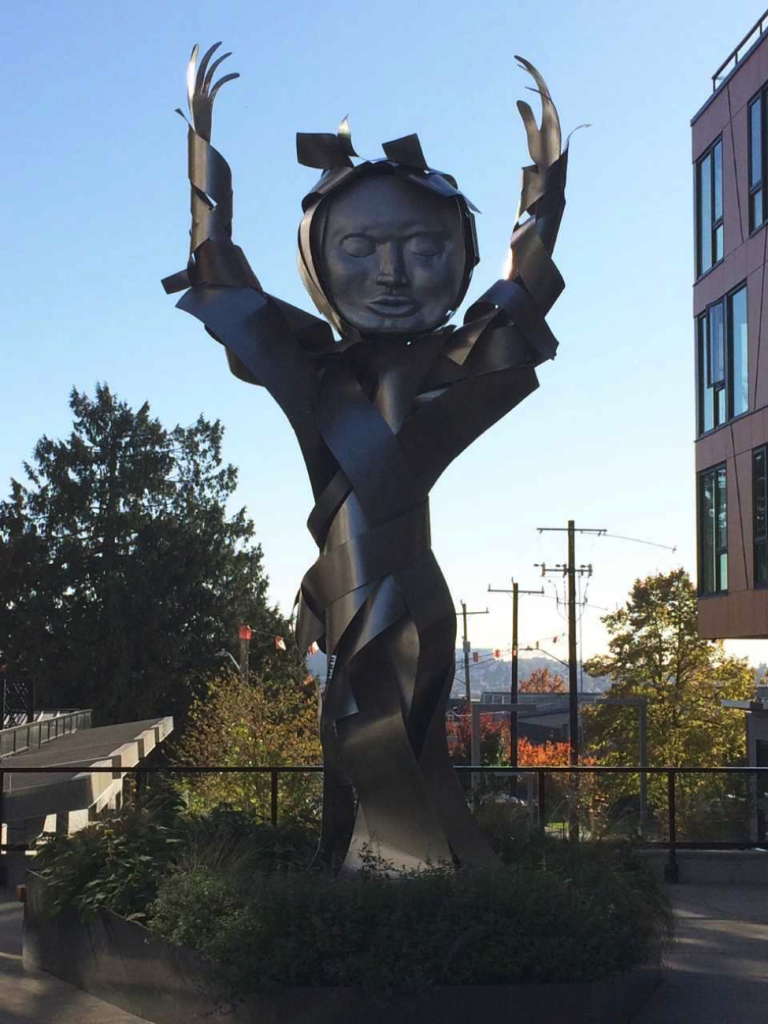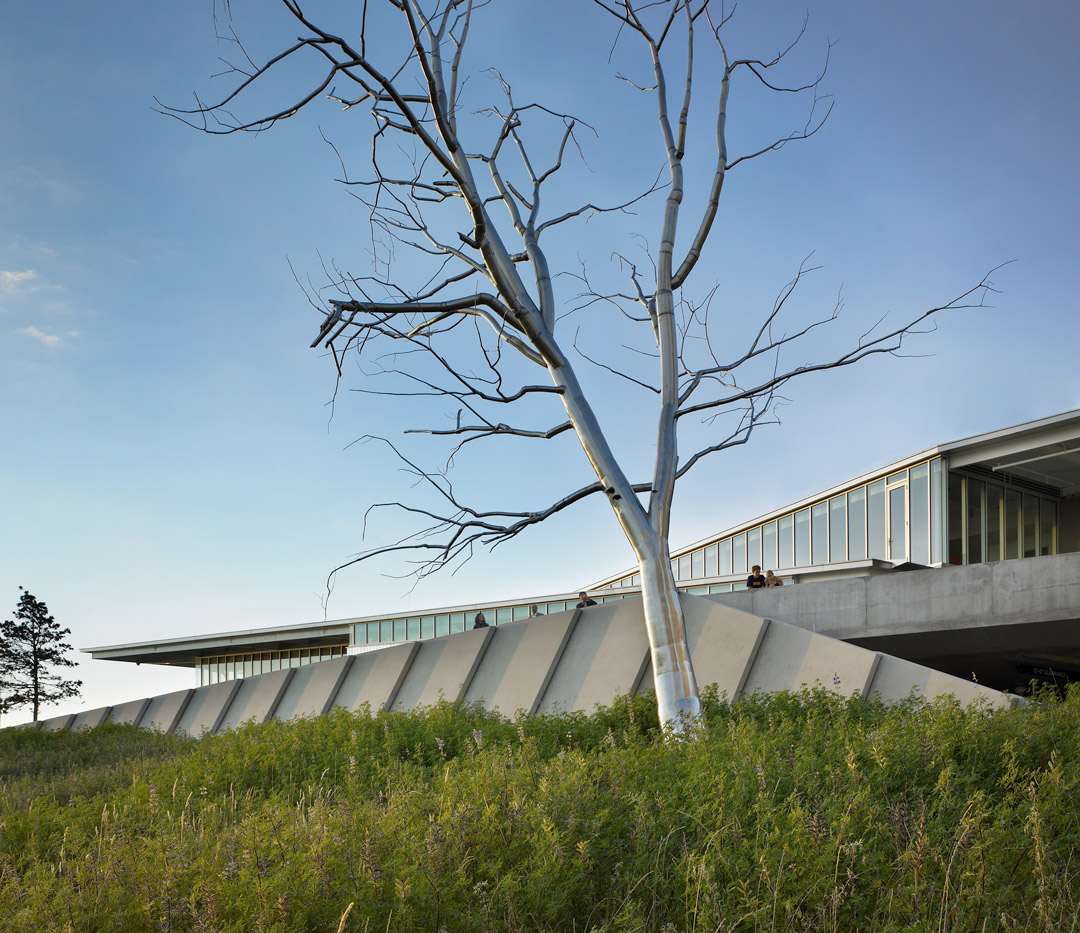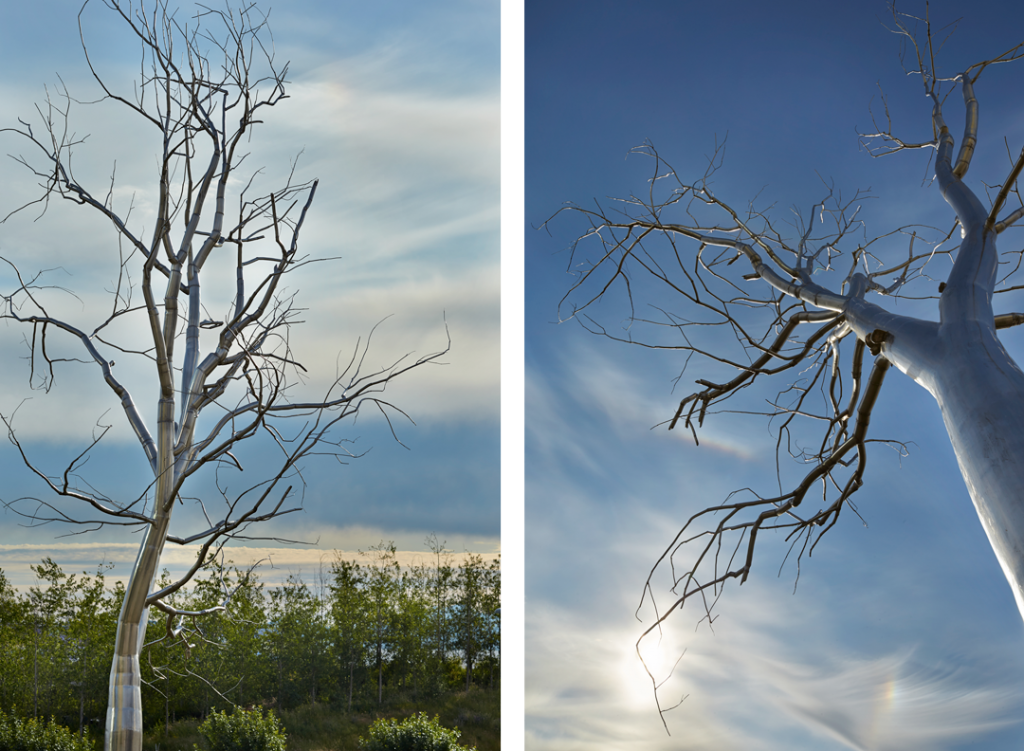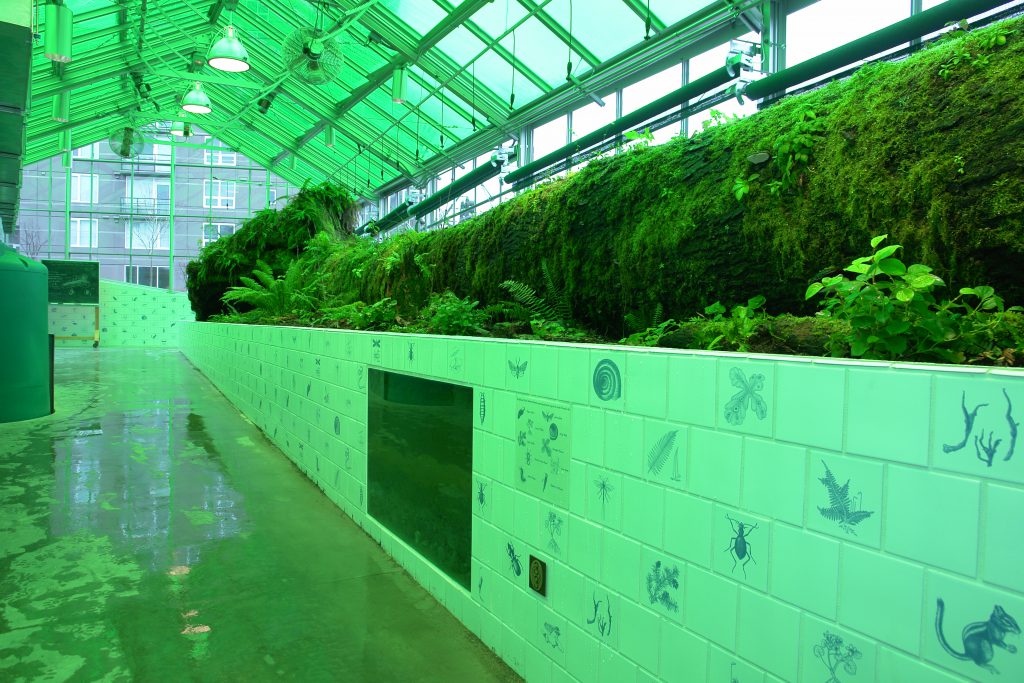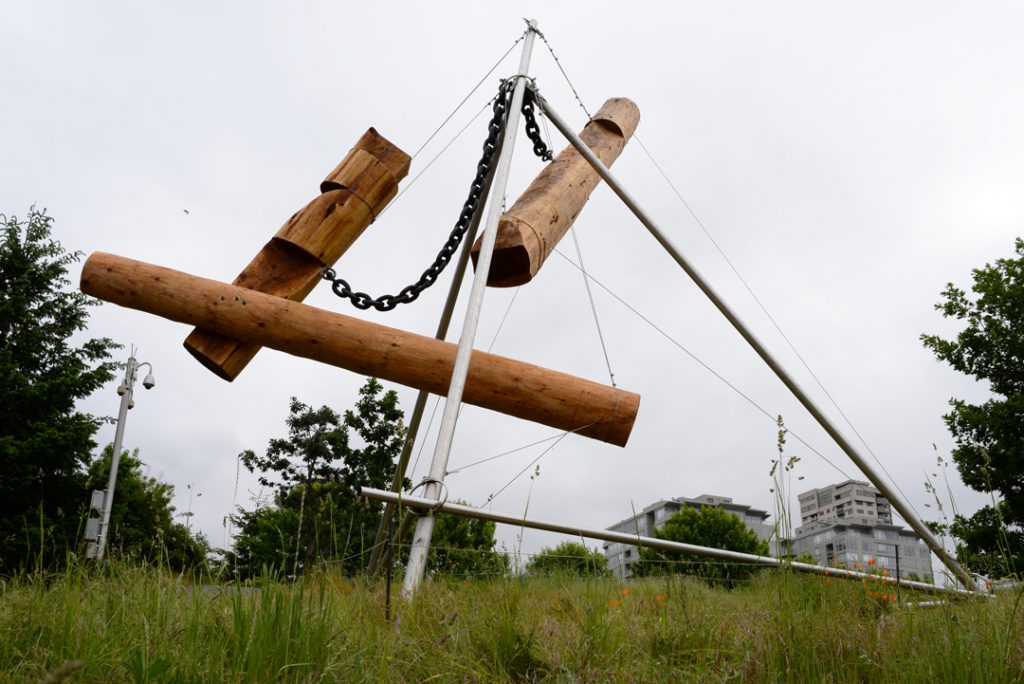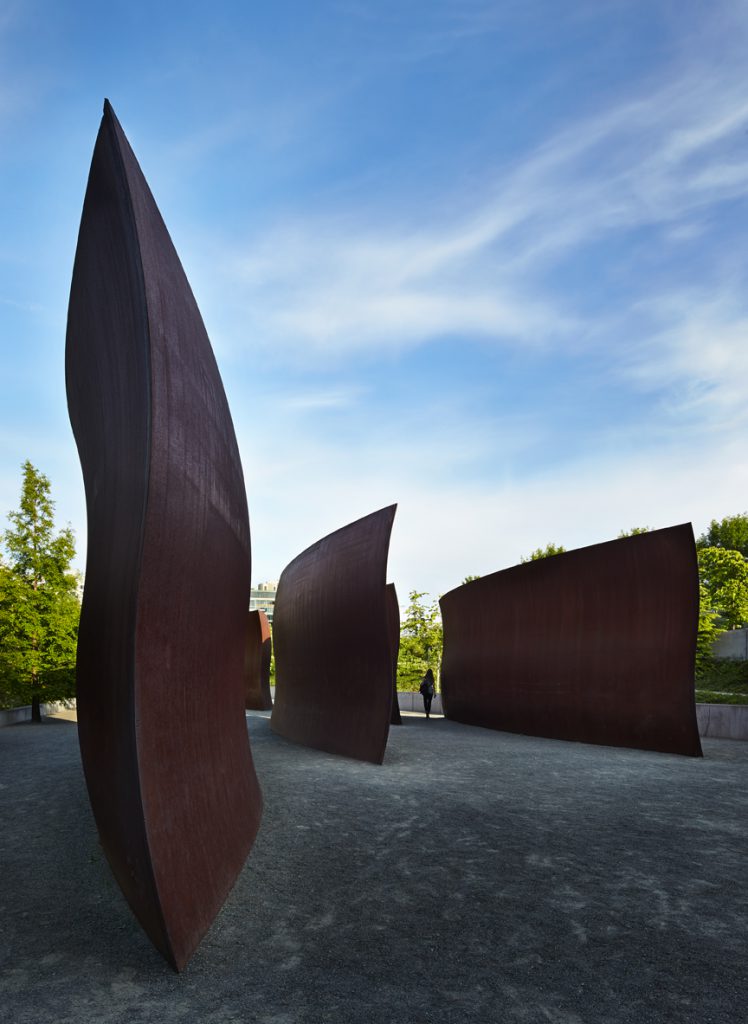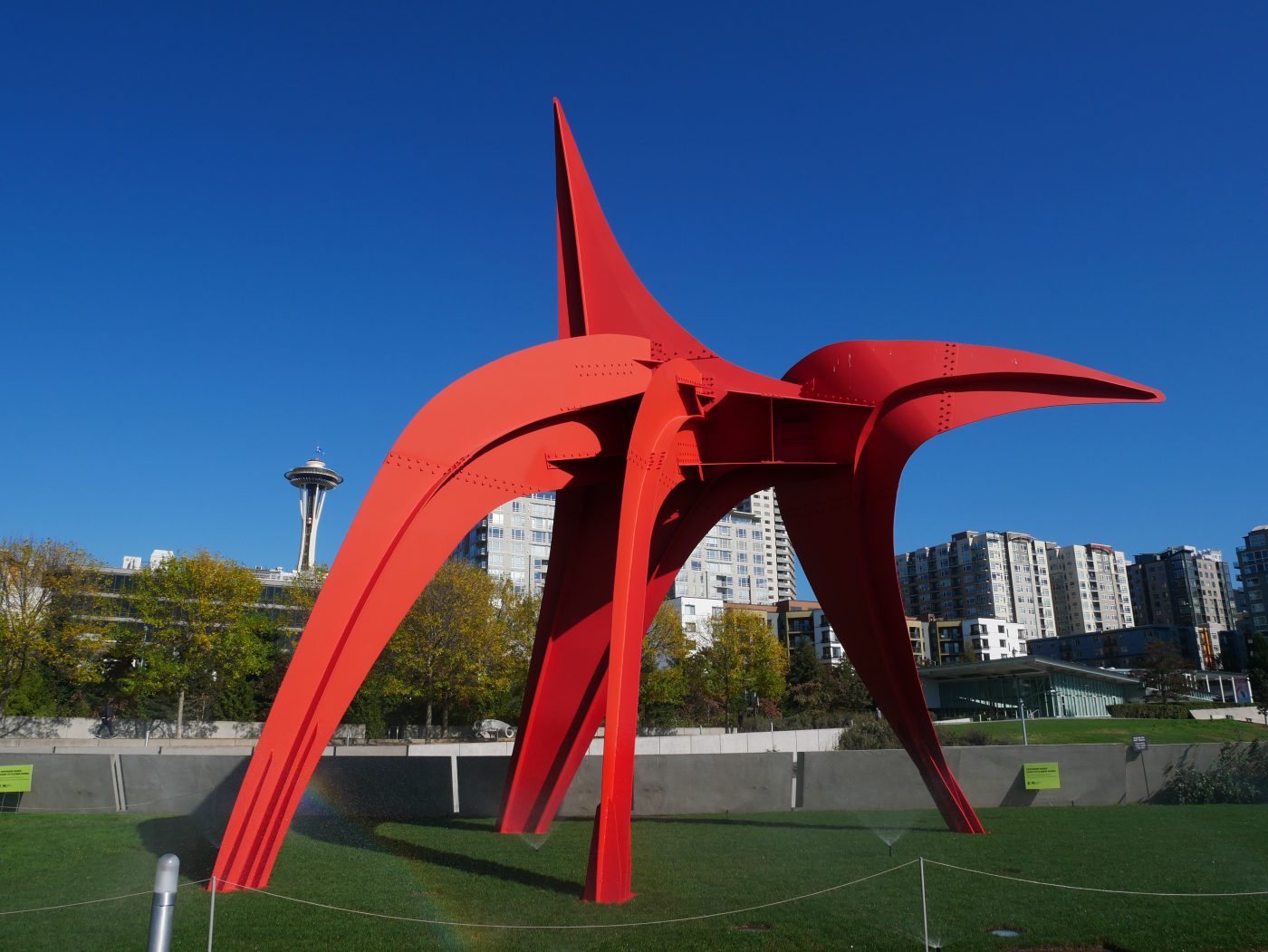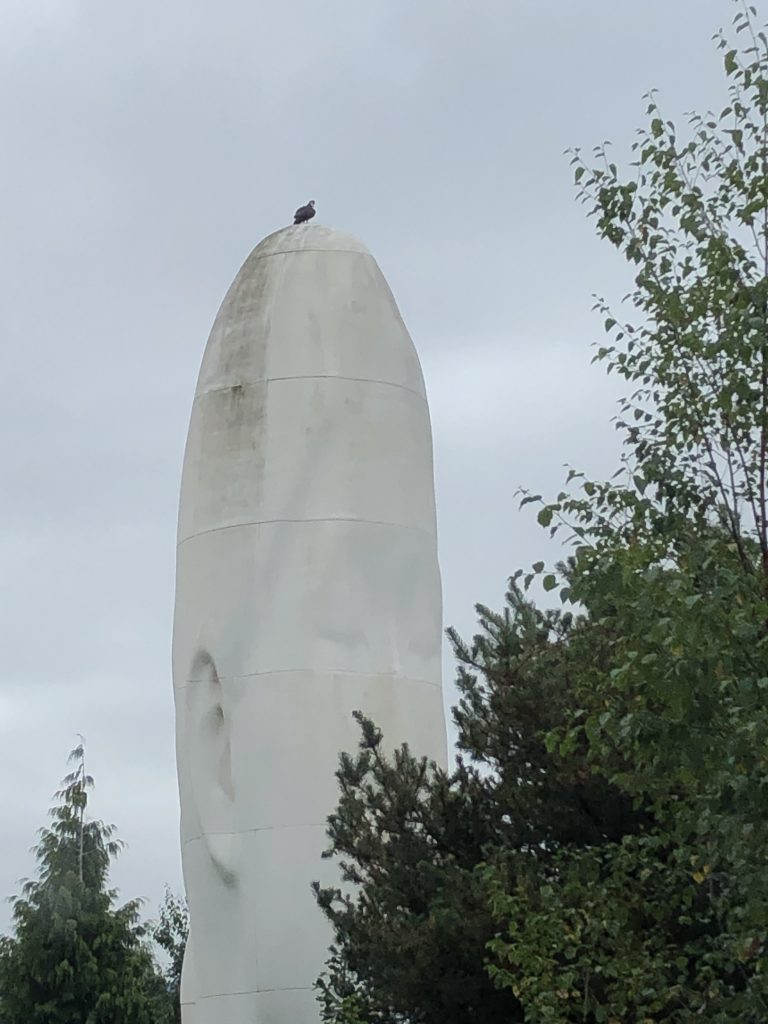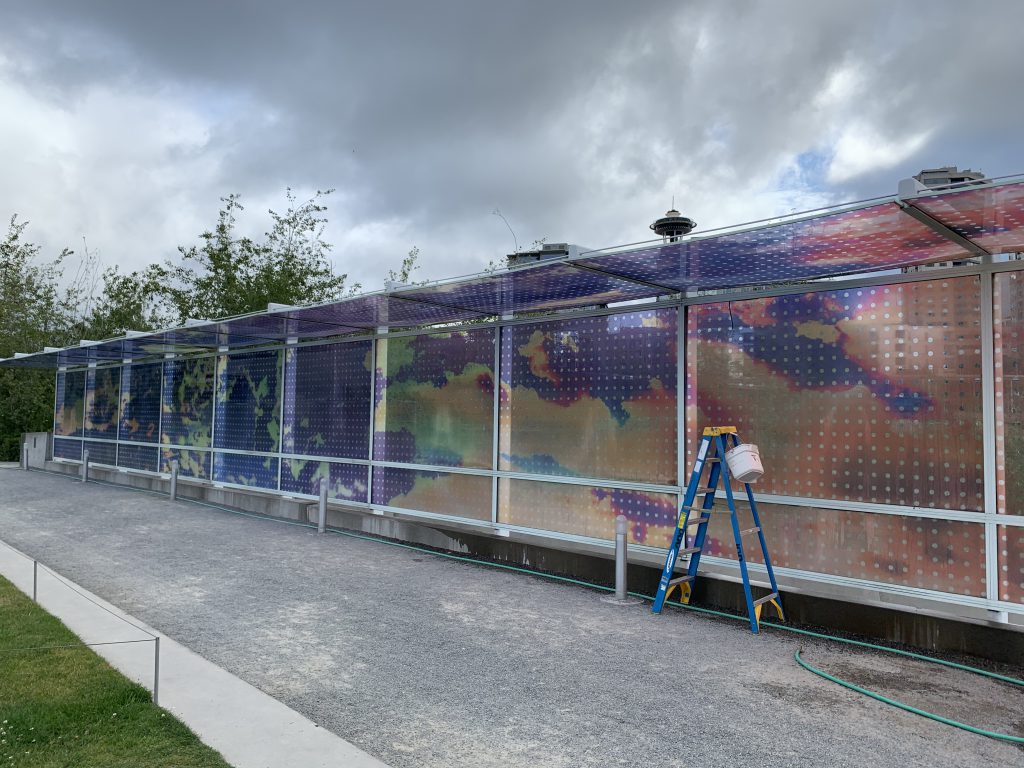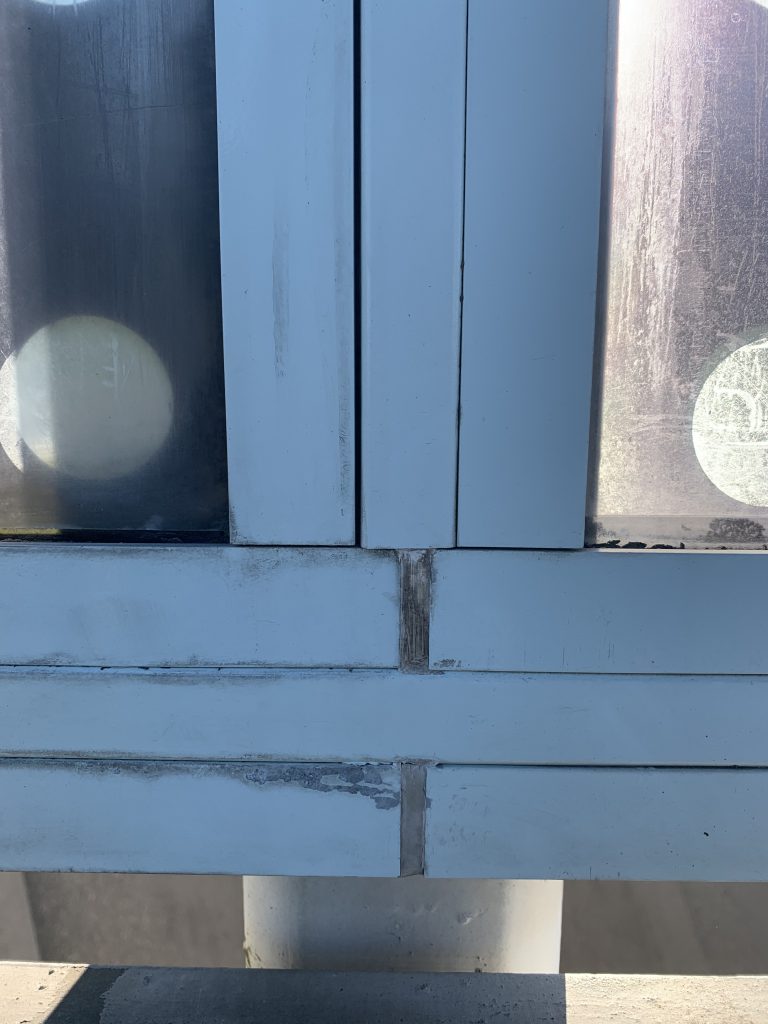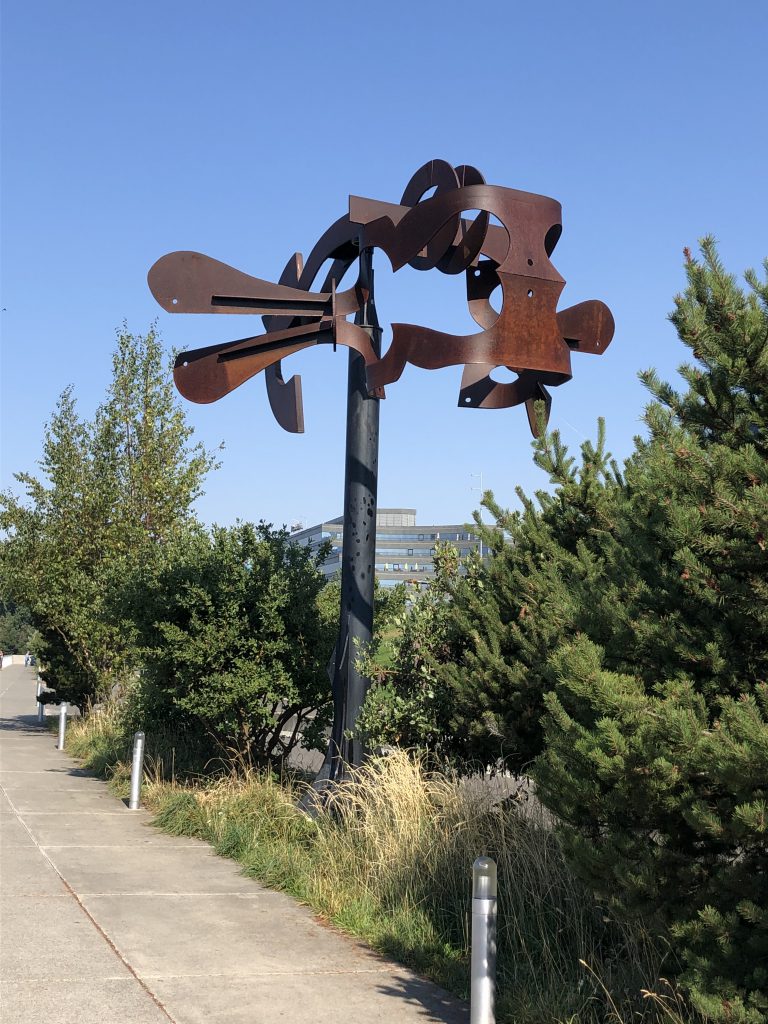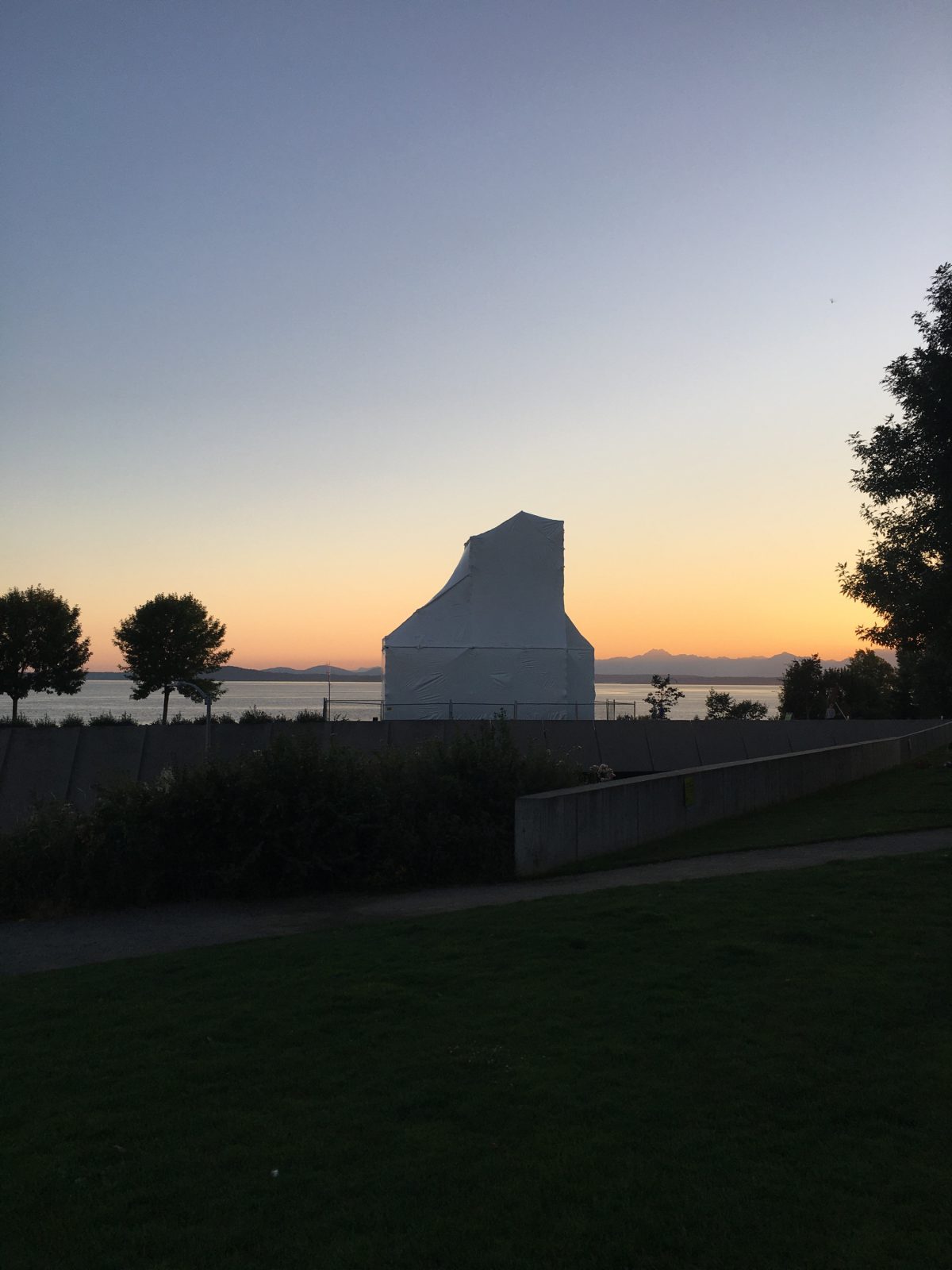Memory Map Smartphone Tour: Indian Madonna Enthroned
As visitors enter the galleries of Jaune Quick-to-See Smith: Memory Map, they’re greeted by the life-size sculpture of a seated woman with an American flag draped over her lap. She is Indian Madonna Enthroned (1974).
With long braids, a thicket of beaded necklaces, a wool shawl, pheasant feathers, and beaded moccasins, she is a representation of the contemporary Native experience, encompassing all of its tender beliefs and violent histories. Embedded in her chest, where her heart should be, is corn. Just behind her, a hide piece is marked “Property of BIA,” signifying the colonial governmental agency established to control Indigenous people and which is now a part of the Department of the Interior. Meanwhile, in her feathered hands, the Madonna demonstrates a sign of resistance by holding activist Vine Deloria Jr.’s God is Red, a 1972 study of Native spiritual practices.
Indian Madonna Enthroned is the subject of the third stop on the free smartphone tour of Memory Map. Produced by the Whitney Museum of American Art, the recording features Smith’s son and fellow artist Neal Ambrose-Smith—who helped restore the sculpture after many years spent in storage—discussing the significance of this work and the American flag draped along its lap. Tune in now to learn more about this Madonna!
Memory Map is now on view at SAM! Throughout the run of the exhibition, we’ll be sharing insight from the exhibition’s free smartphone tour to provide additional information about many of the works on view that can’t be found in the galleries. To access all 19 stops on the tour, scan the QR code next to select artworks on view or browse our SoundCloud on your own time.
Indian Madonna Enthroned, 1974
NARRATOR: Take a moment to look at the materials Smith used in this early sculpture, which she called Indian Madonna Enthroned. She has corn at her heart, and pheasant wings for hands. She holds a book by the Standing Rock Sioux writer Vine Deloria, which contrasts Christianity to Native religions, with their focus on the interconnectedness of all living things. While these elements suggest the figure’s connection to nature, other aspects of the work point to the ways she’s constrained by colonial forces.
Her face is literally framed. If you walk around to the back of the sculpture, you’ll see that her child also appears in a frame. Look closely at the hide behind the figure’s head on the frame of the chair, and you’ll see that Smith has stenciled on the words “Property of the BIA”—or Bureau of Indian Affairs.
Smith often collaborates with her son, the artist Neal Ambrose-Smith, who restored parts of this sculpture after many years in storage. He’s talked about the flag on the Madonna’s lap, and its symbolic complexities for Native Americans.
NEAL AMBROSE-SMITH: Many people have different identities regarding flag and flag etiquette and things that are connected to that, like war, for instance, which traditionally is the most documented way of documenting history. When we talk about history, it’s always like every 200 years because there’s a war connected to it or something. In Native identity, we talk about history through the land, and so it goes back 10,000 years, it goes back 40,000 years. We talk about the glaciers, we talk about the winds and the trees and how we’re connected to all that, and so I think for me, that aspect of that flag really brings a lot of those things together.
– Lily Hansen, SAM Marketing Content Creator
Photo: Alborz Kamalizad.
